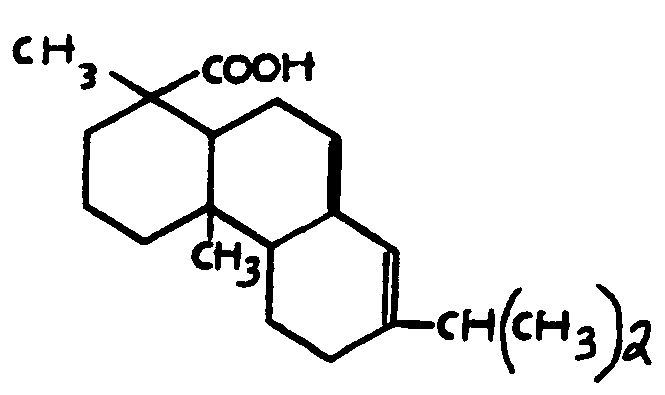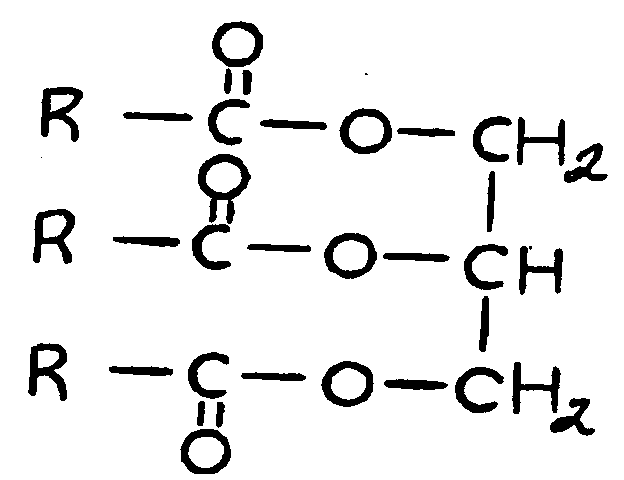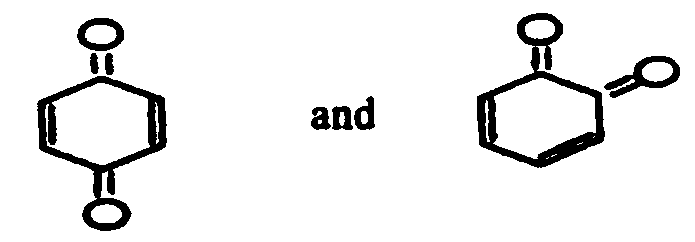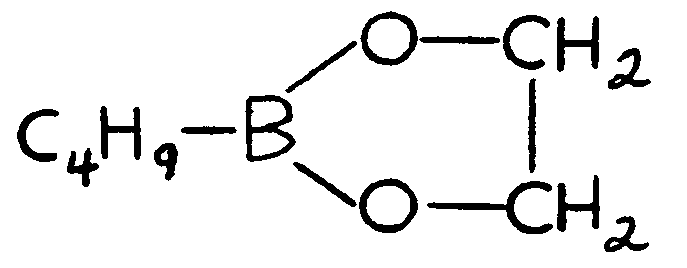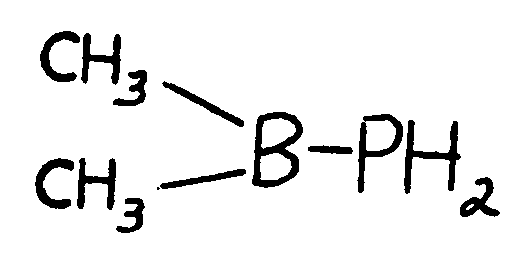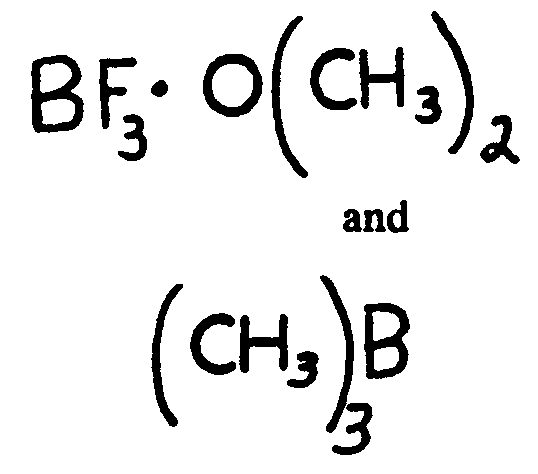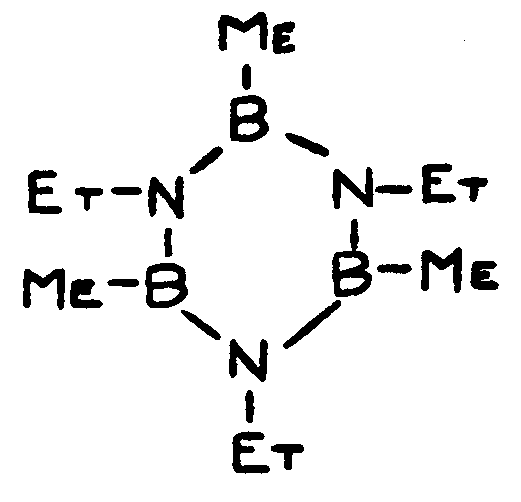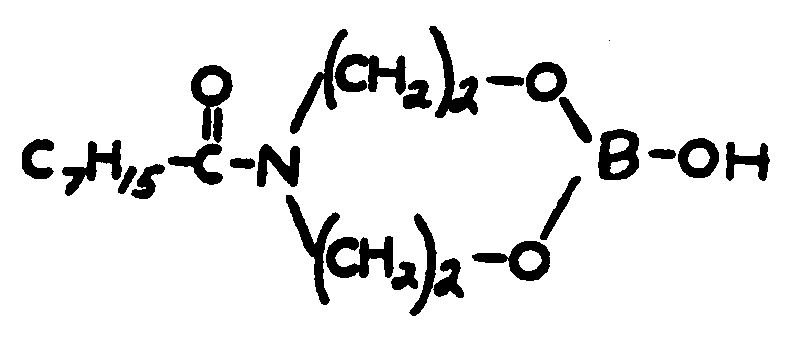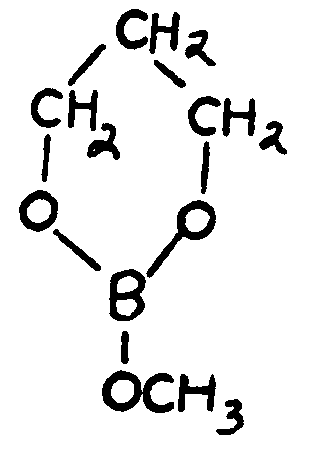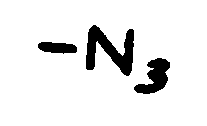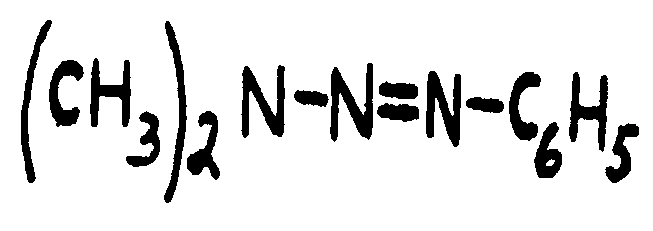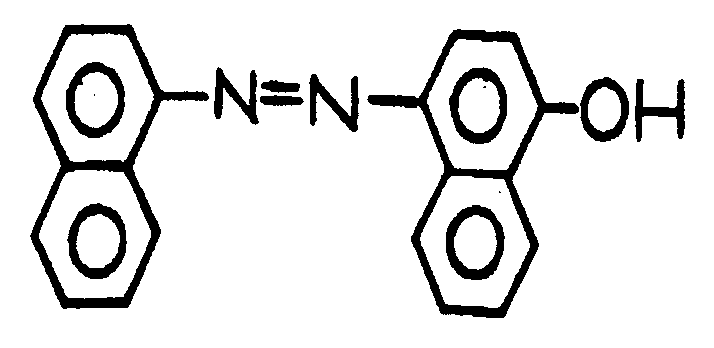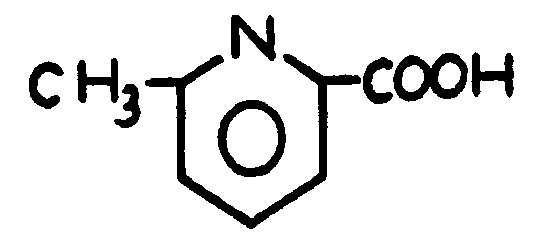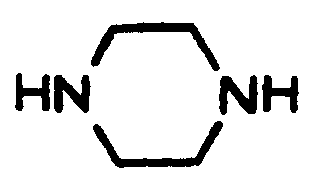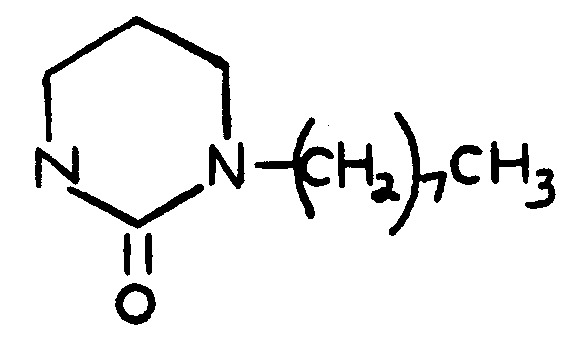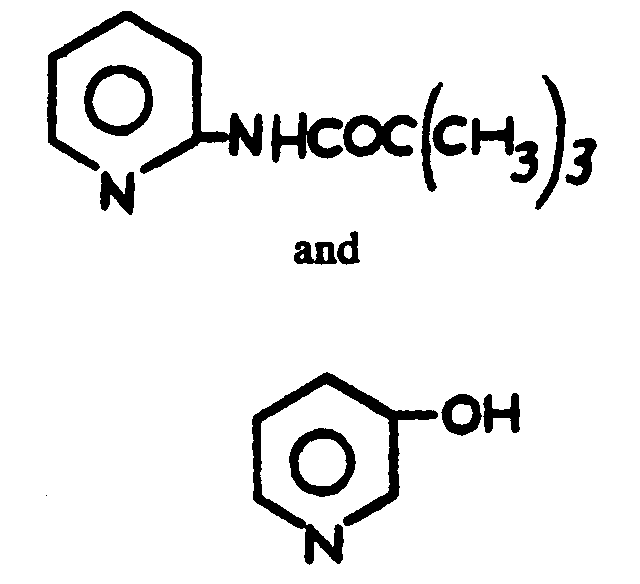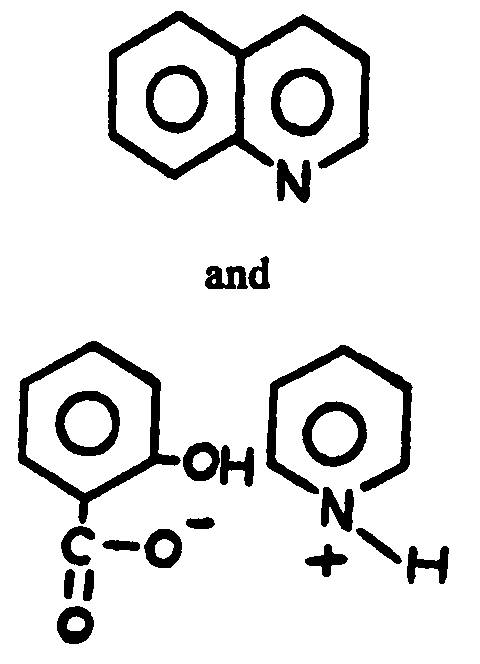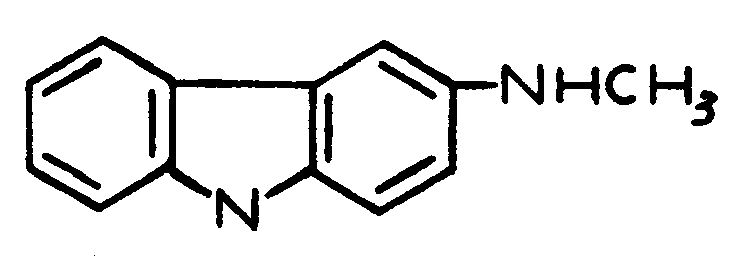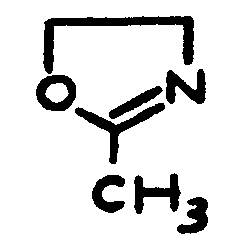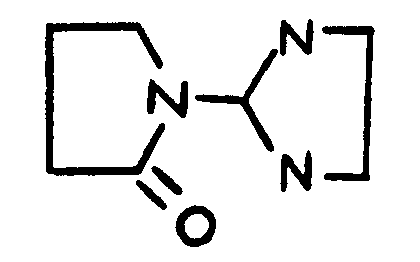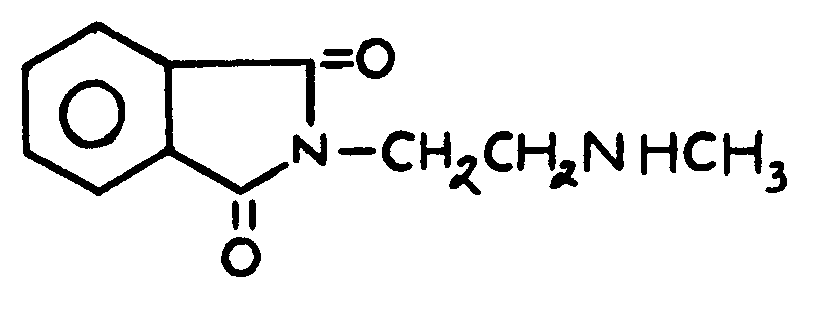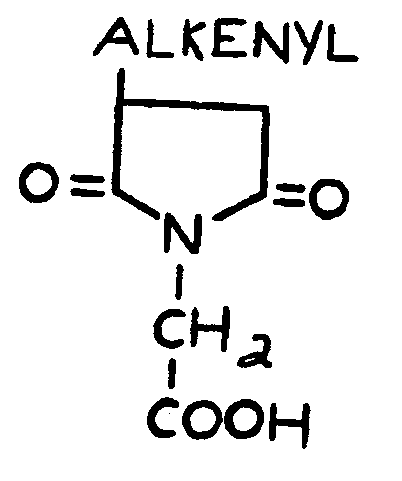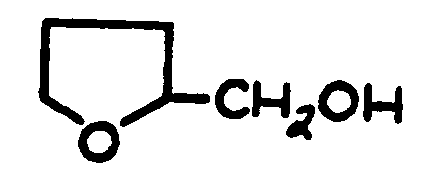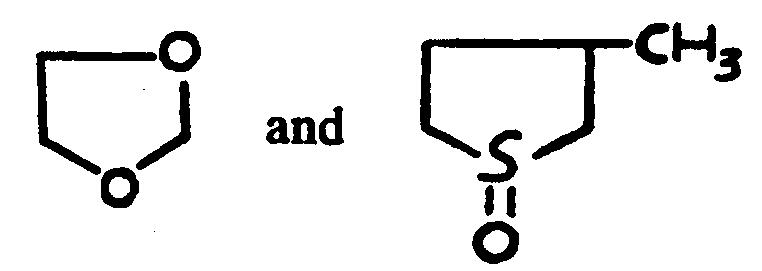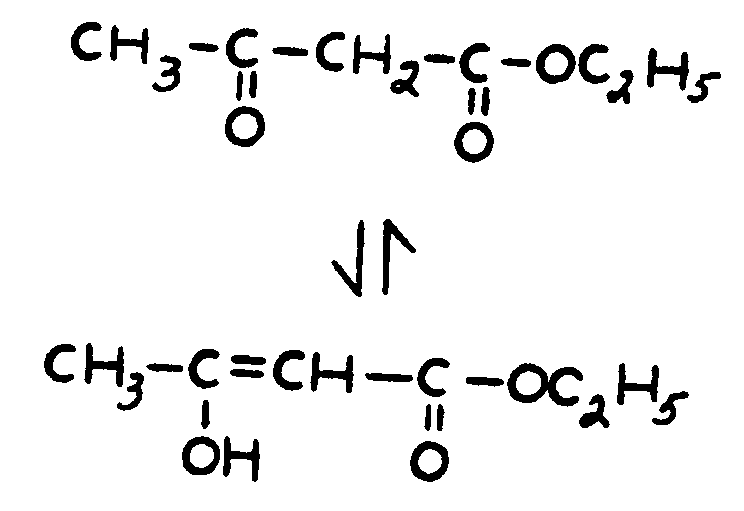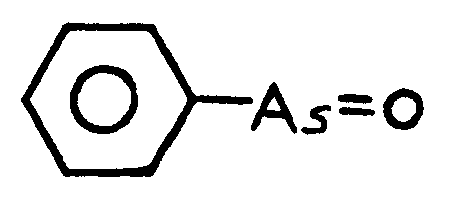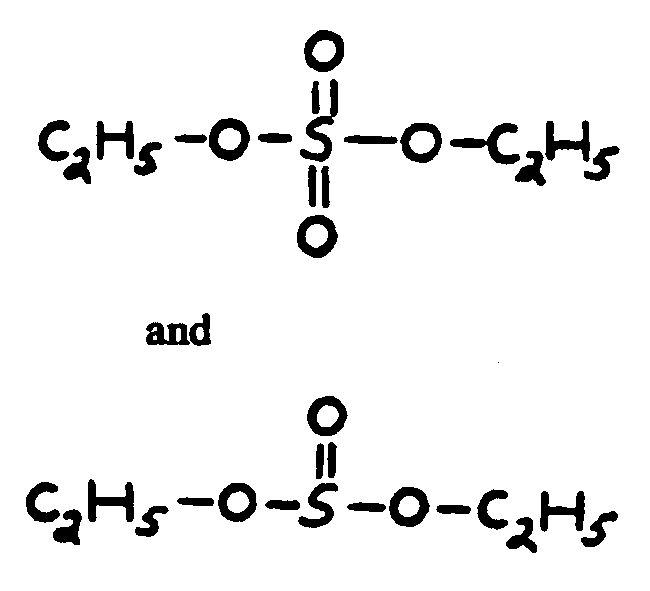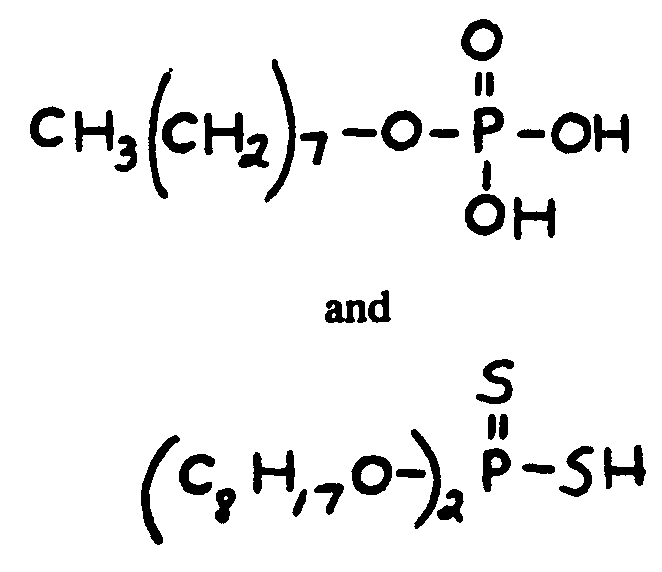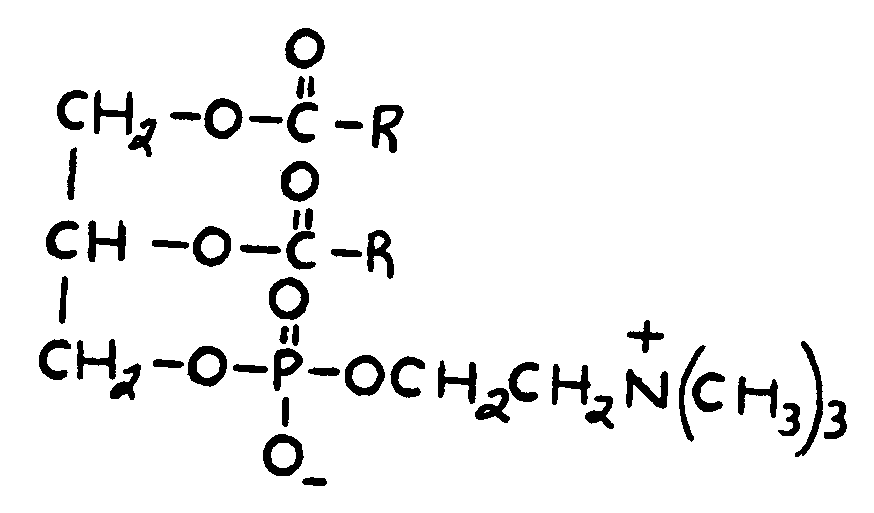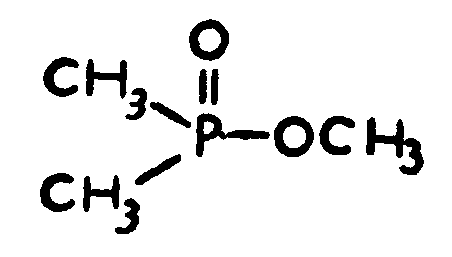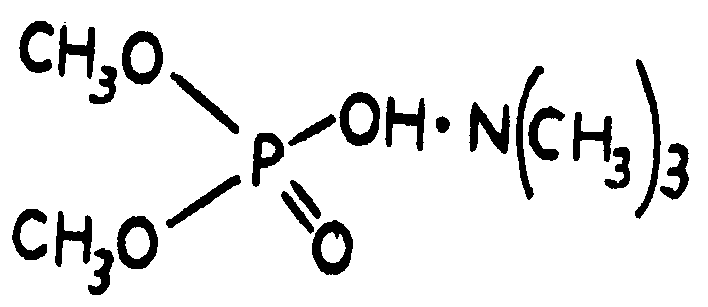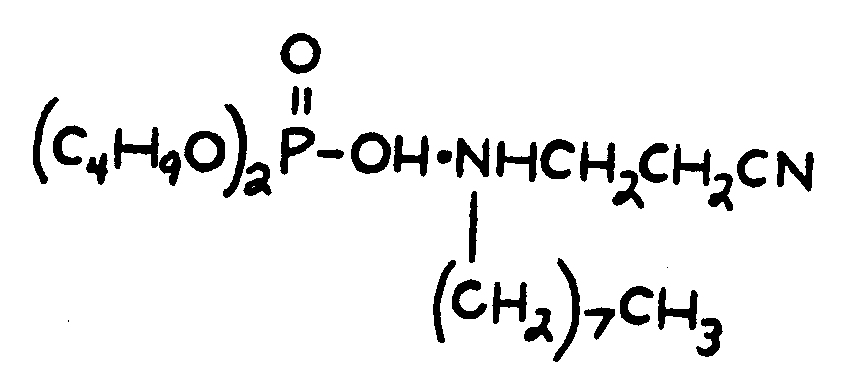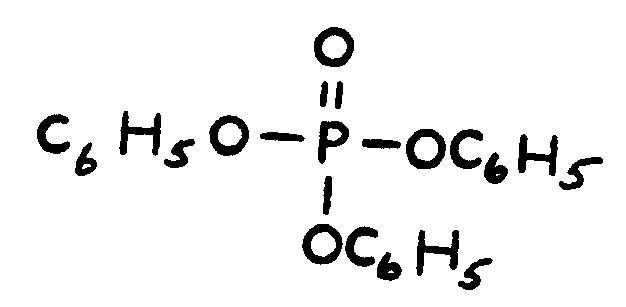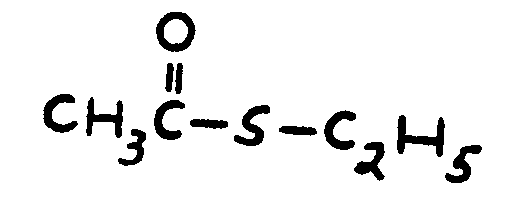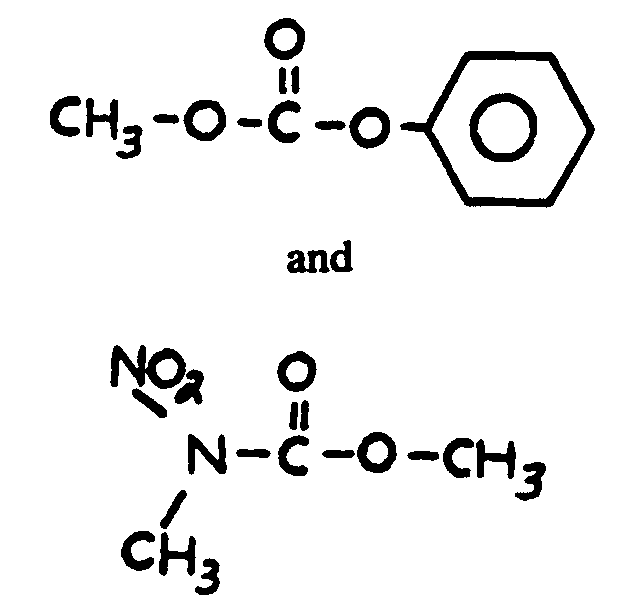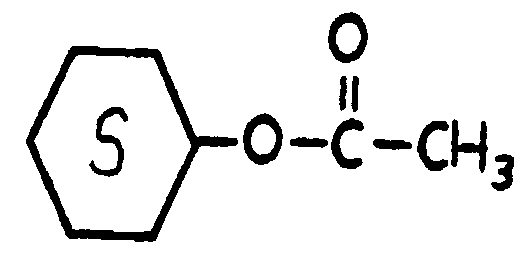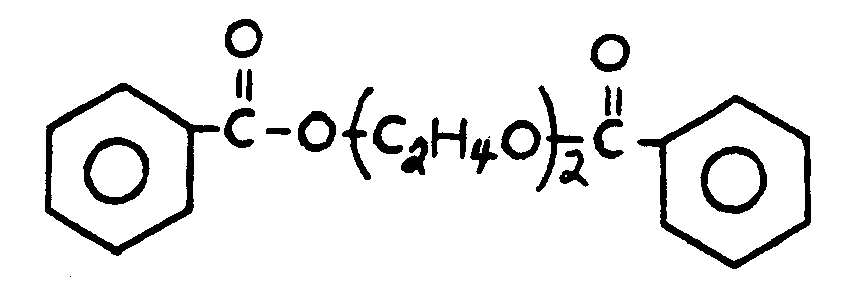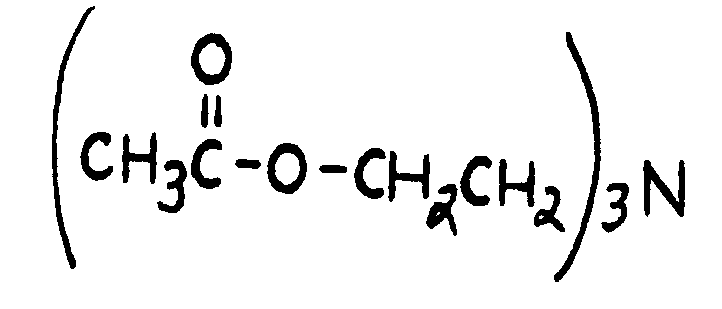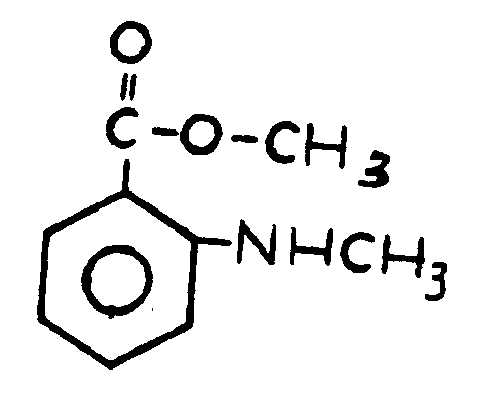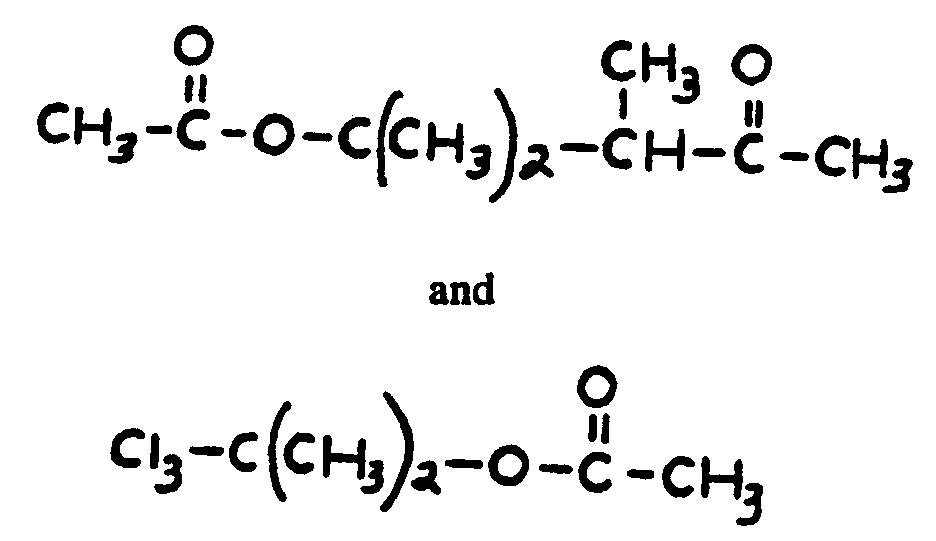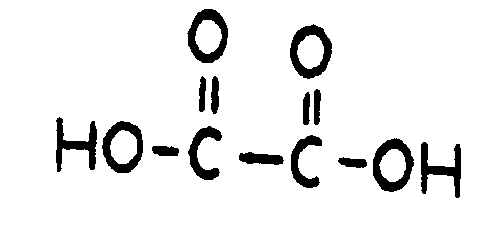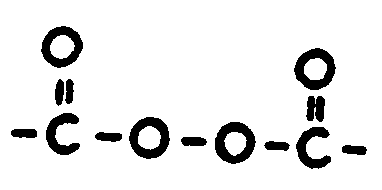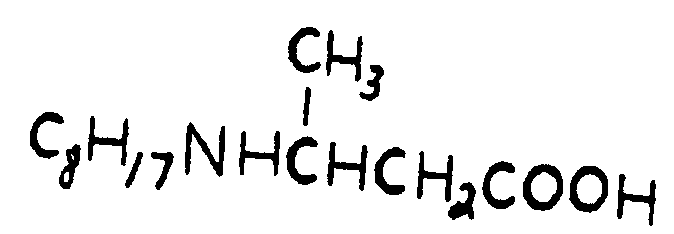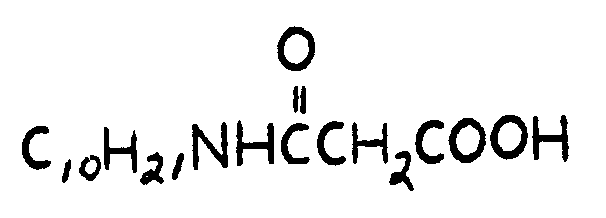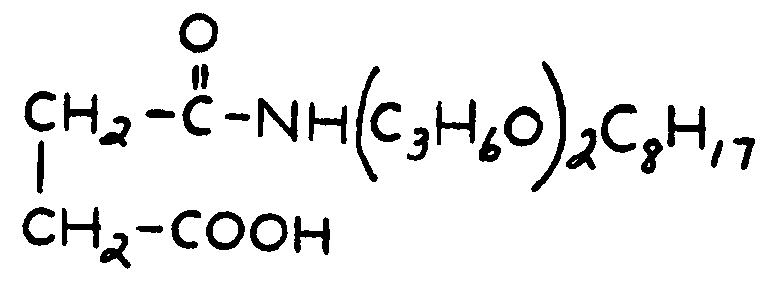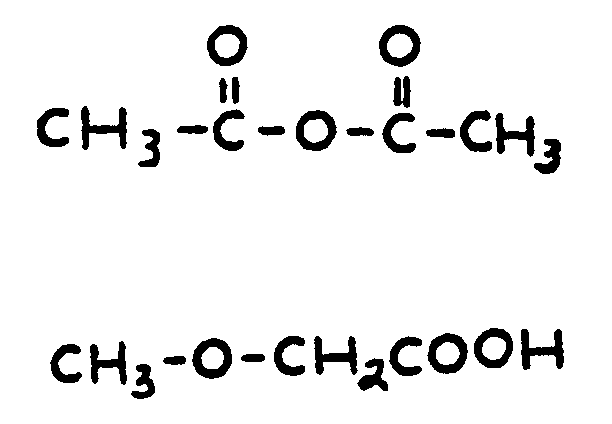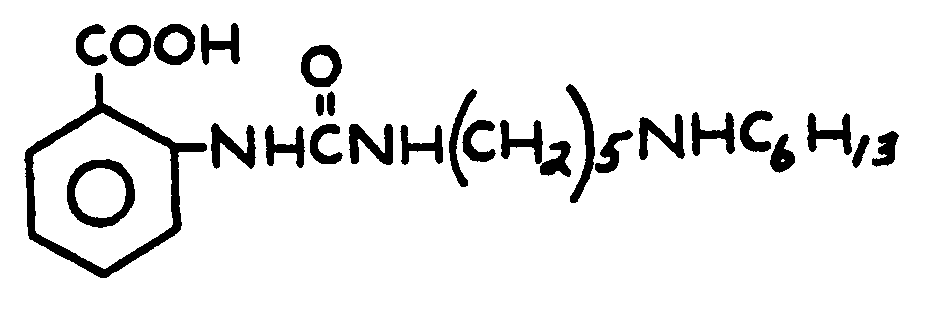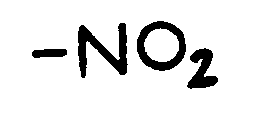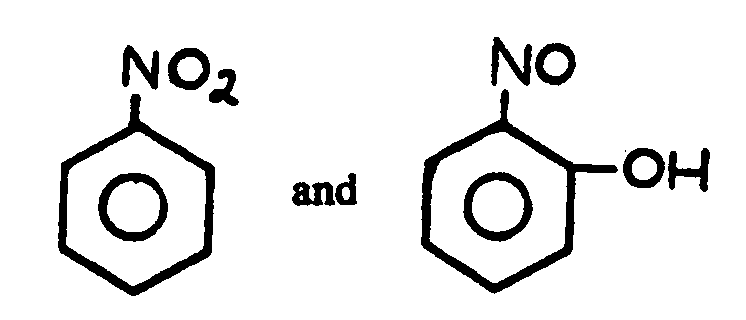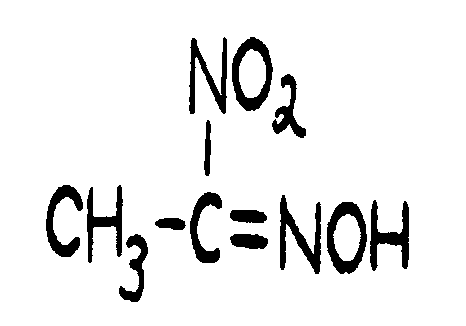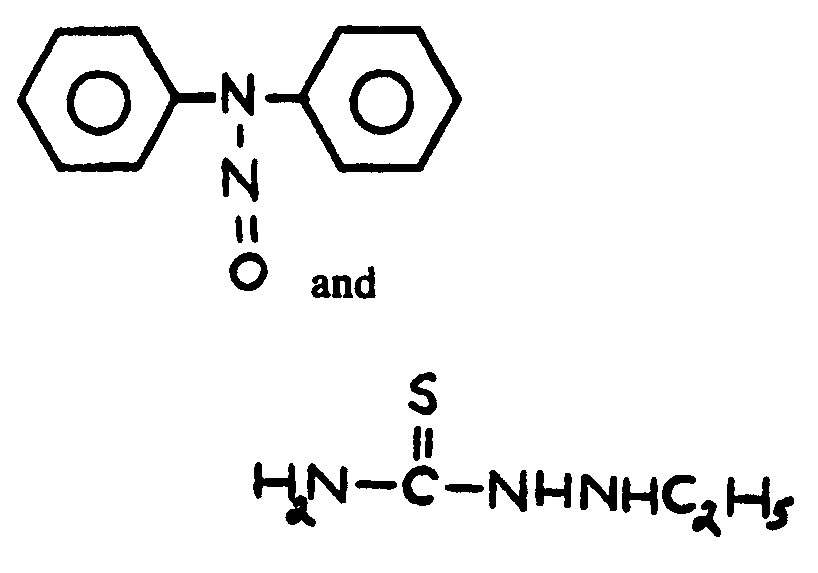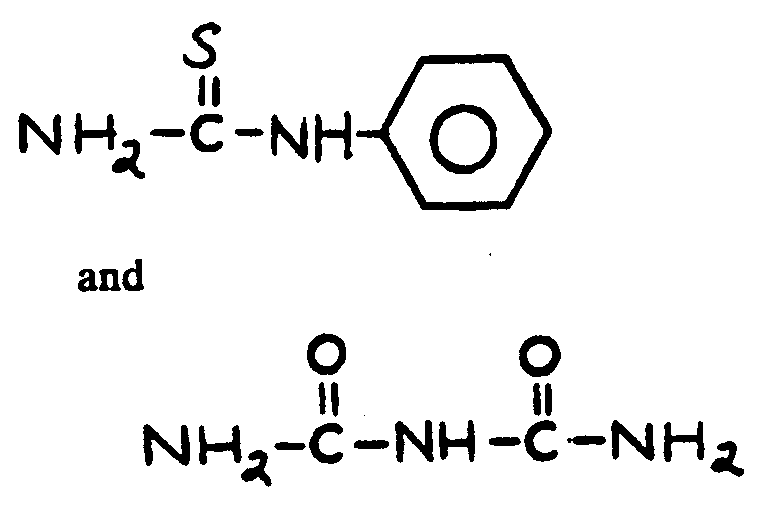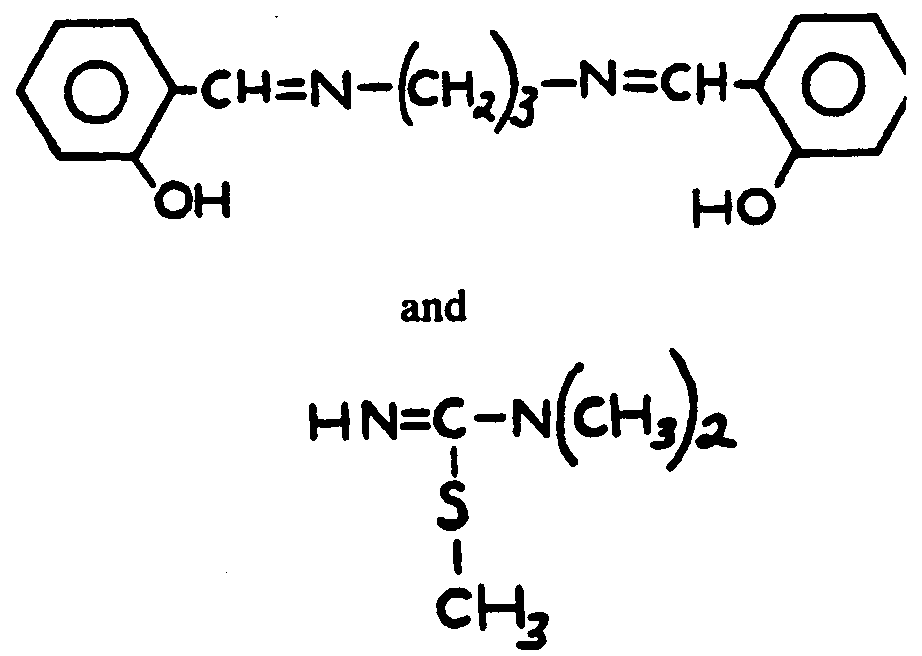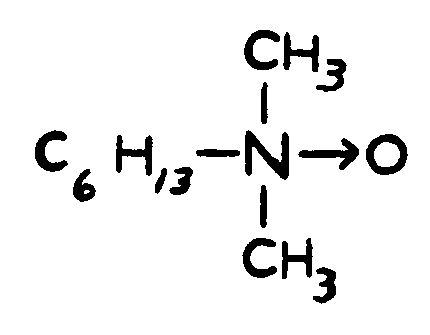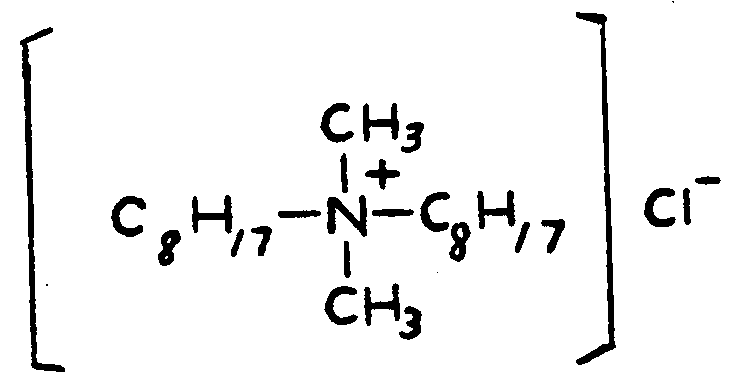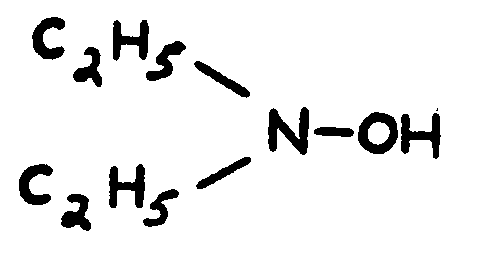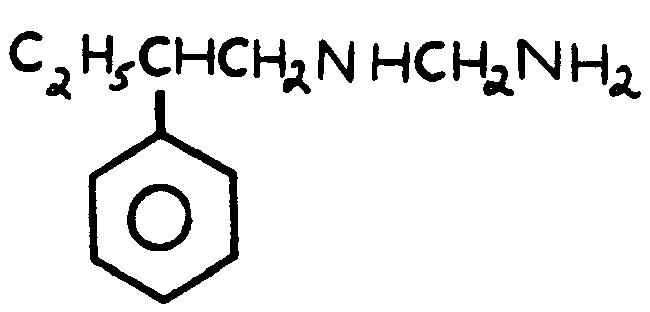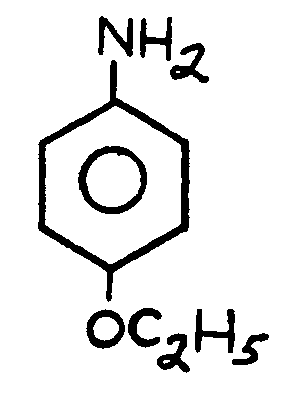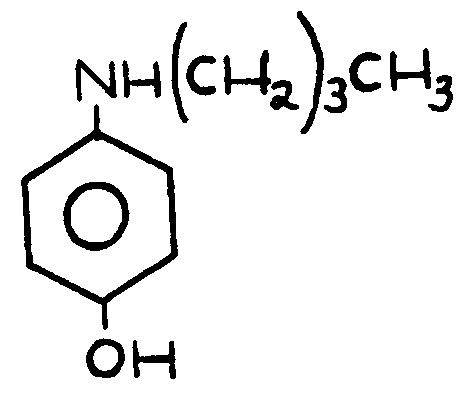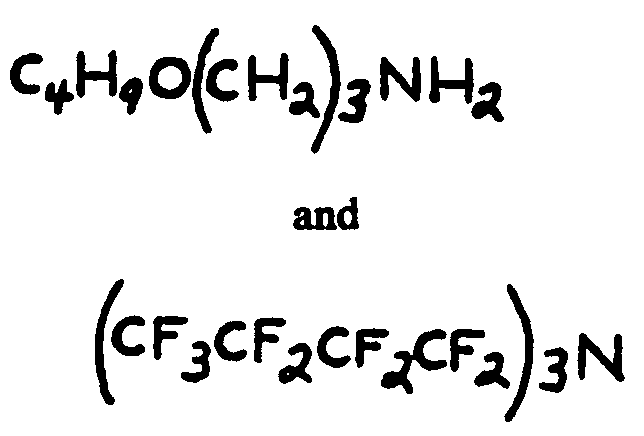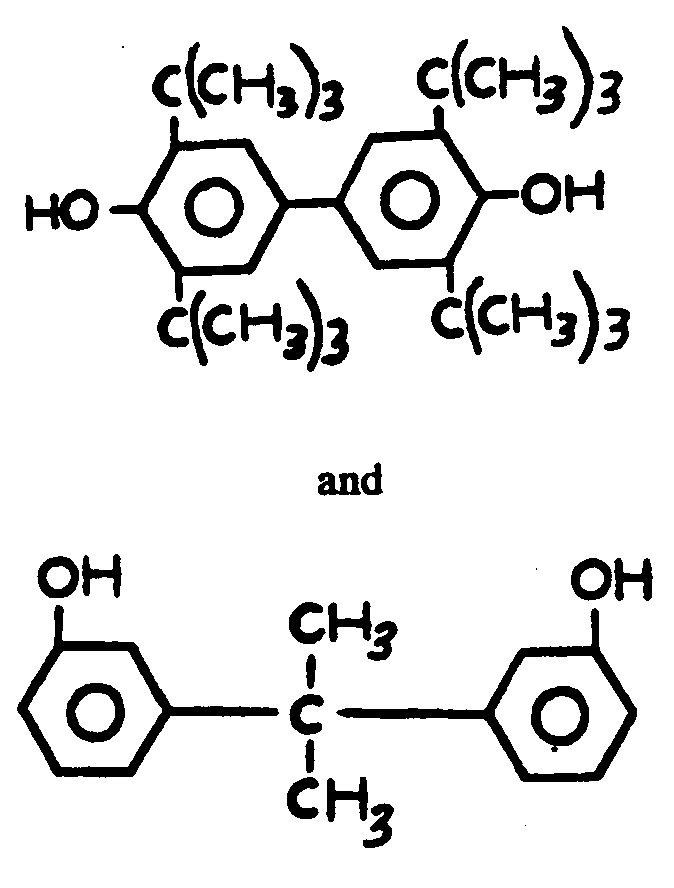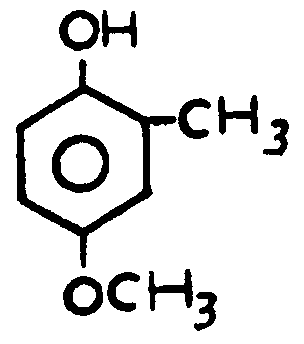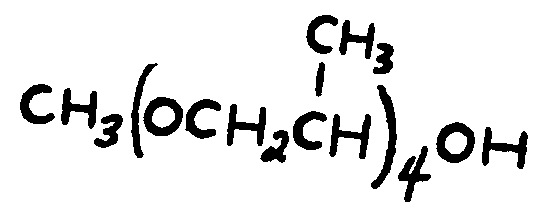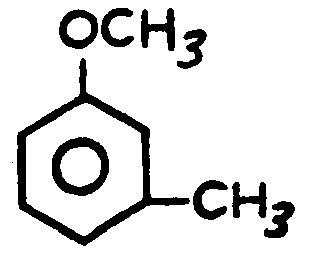![[Search a list of Patent Appplications for class 44]](../as.gif) CLASS 44, CLASS 44, | FUEL AND RELATED COMPOSITIONS |
| Click here for a printable version of this file | |
SECTION I - CLASS DEFINITION
This class includes most patents for:
A liquid or solid composition designed primarily to react chemically, usually with oxygen in air, to produce heat in controllable amounts, included are most compositions designed to produce both heat and a deoxygenating effect in metallurgical and similar processes, designated to be dispersed in air for explosive combustion in an engine and/or designed to produce illumination light along with heat upon combustion.
A process for making such composition by adding substances, by removing components (using chemical or physico-chemical procedures) by shaping or reshaping or arranging fuel elements or object in a particular relation to each other, except where provided for in another class.
Apparatus specialized for use in an above process and not provided for in a single other class.
An additive which imparts desire aesthetic, handling or burning properties to a fuel, or a composition useful only for scratching a match or removing soot from a combustion-related apparatus.
Certain combinations of fuel with an igniting composition, an incombustible carrier for the fuel, a wrapper of bundling material or an additive as described above.
A solid product of a Class 201 thermolytic distillation process not elsewhere classifiable.
A process for treating coal not elsewhere classifiable.
SECTION II - NOTES TO THE CLASS DEFINITION
| (1) Note. In this class a process for making a fuel product is classified with the product, except where specifically provided for elsewhere. |
SECTION III - LINES WITH OTHER CLASSES AND WITHIN THIS CLASS
When the expression "organic compound" is used in this class, it means a compound which fulfills the requirements of the Class 260 class definition, i.e., the molecule is characterized by two carbons bonded together, one atom of carbon bonded to at least one atom of hydrogen or halogen, or one atom of carbon bonded to at least one atom of nitrogen by a single or double bond. Certain compounds are exceptions to this rule, i.e., HCN, CN-CN, HNCO, HNCS, cyanogen halides, cyanamide, fulminic acid and metal carbides.
The rules for determining Class placement of the Original Reference (OR) for claimed chemical compositions are set forth in the Class Definition of Class 252 in the section LINES WITH OTHER CLASSES AND WITHIN THIS CLASS, subsection COMPOSITION CLASS SUPERIORITY, which includes a hierarchical ORDER OF SUPERIORITY FOR COMPOSITION CLASSES.
SECTION IV - REFERENCES TO OTHER CLASSES
SEE OR SEARCH CLASS:
| 34, | Drying and Gas or Vapor Contact With Solids, appropriate subclasses for a process limited to a drying step for the removal of moisture or other liquid impurity from a solid fuel. |
| 48, | Gas: Heating and Illuminating, appropriate subclasses especially subclasses 197+ for a fuel composition which is a mixture of gages and a process for making such a composition from solid and/or liquid material, e.g., coal, oil, water, etc., especially subclasses 209, 210 and 211 for a process for producing a gas as a desired product from wood, coal and/ or oil, weather or not a liquid and/ or solid fuel is produced as a by-product or an additional desired product. |
| 60, | Power Plants, subclass 200.1 for a reaction motor which may contain a claimed fuel. |
| 75, | Specialized Metallurgical Processes, Compositions for Use Therein, Consolidated Metal Powder Compositions, and Loose Metal Particulate Mixtures, appropriate subclasses for a method which produces a free metal from a metal compound, whether or not a fuel composition is also produced. |
| 102, | Ammunition and Explosives, appropriate subclasses for incendiary bombs and projectiles, and appropriate subclasses for an ammunition or explosive charge or device having a fuse for ignition mass or surface. |
| 106, | Compositions: Coating or Plastic, appropriate subclasses for a coating or plastic composition not useful primarily as a fuel, including a composition which may be used as a binder for fuel particles for a coating for fuel. |
| 110, | Furnaces, appropriate subclasses for industrial apparatus for burning a solid fuel, which apparatus does not claim the fuel itself, or a process for burning or igniting solid fuel, including a process wherein fuels are blended or mixed or an additive is applied to a fuel within a solid-fuel burner or apparatus ancillary thereto, such as provided for in that class (110). |
| 118, | Coating Apparatus, appropriate subclasses for a device useful only for applying a coating material to a substrate, e.g., a solid fuel. |
| 126, | Stoves and Furnaces, appropriate subclasses for a domestic apparatus and process along the same lines as Class 110, above. |
| 131, | Tobacco, subclasses 329 and 349+ for tobacco-containing products intended to be burned. |
| 137, | Fluid Handling, appropriate subclasses fora method or apparatus for transporting or allowing the transporting or allowing the transport of, a liquid or gaseous material, e.g, a fuel. |
| 144, | Woodworking, subclasses 50+ for match making. |
| 149, | Explosive and Thermic Compositions or Charges, appropriate subclasses for thermite-type compositions, and those which include sufficient oxidizer (such as a chlorate or a nitrate) as a component thereof to provide at least the major portion necessary for its combustion. Solid rocket-propellant fuels are classified in Class 149. Fuels which undergo combustion in air are classified in this class (44). See (2) Note and (3) Note in the class definition of Class 149. |
| 162, | Paper Making and Fiber Liberation, for a process or apparatus for the purification or recovery of cellulose or other fibrous material for use other than as fuel. |
| 196, | Mineral Oils: Apparatus, appropriate subclasses for dewaxing, solvent extraction, refining, vaporizing, etc., apparatus. |
| 201, | Distillation: Processes, Thermolytic, appropriate subclasses for a process of carbonizing coal, oil shale, wood or other solid carbonaceous material not otherwise provided for, wherein a recoverable vapor or gas product is produced, whether or not a usable fuel composition is also produced. The solid product of a Class 201 thermolytic distillation process, not elsewhere classifiable, is classified in this class (44). |
| 202, | Distillation: Apparatus, appropriate subclasses for apparatus for carbonizing solid carbonaceous material. |
| 204, | Chemistry: Electrical and Wave Energy, appropriate subclasses for a chemically reactive treatment of a fuel or related composition by direct exposure to electrical or wave energy where such treatment is performed either as a single step process or as the last step of a multistep process. |
| 205, | Electrolysis: Processes, Compositions Used Therein, and Methods of Preparing the Compositions, for electrolytic production or treatment of a fuel or related composition where such production or treatment is performed either as a single step process or as the last step of a multistep process. |
| 206, | Special Receptacle or Package, subclasses 85+ for a tobacco package with an igniter for the content, subclasses 96+ for a match packet, container assemblage of diverse components (i.e., a kit), one or more components of which may contain a fuel composition. |
| 208, | Mineral Oils: Processes and Products, subclasses 15+ for a liquid fuel which is entirely mineral oil-derived, and appropriate other subclasses for a process for producing such fuel from a solid or liquid mineral material. Also, a process for producing coke from mainly mineral oil material is classified in class 208. |
| 209, | Classifying, Separating, and Assorting Solids, appropriate subclasses, for a nonchemical method of removing an impurity from a solid fuel composition, e.g., by magnetism, sleving, flotation, etc. |
| 241, | Solid Material Comminution or Disintegration, appropriate subclasses for a process or apparatus for comminuting or breaking up solid fuel substances, alone or combined with a procedure for separating solids. |
| 252, | Compositions, appropriate subclasses for a composition no classifiable elsewhere, especially subclass 70 for composition which may release heat due to a readily-reversible chemical reaction, subclass 373 for a gas composition which may have fuel value but which is intended for use as a chemical reactant and subclasses 502+ for an electrically conductive or emissive composition, e.g., an electrode, etc., containing elemental carbon. See also (1) Note, above. |
| 264, | Plastic and Nonmetallic Article Shaping or Treating: Processes, appropriate subclasses for plastic-shaping methods, e.g., subclass 5 for shaping or treating explosive or propellant compositions, etc. |
| 314, | Electric Lamp and Discharge Devices: Consumable Electrodes, subclass 60 for a consumable electrode. |
| 422, | Chemical Apparatus and Process Disinfecting, Deodorizing, Preserving, or Sterilizing, for an apparatus in general in which a chemical reaction takes place. |
| 423, | Chemistry of Inorganic Compounds, appropriate subclasses for an inorganic compound or element in a relatively pure state or a process for making such a material, especially subclasses 445+ for a method of producing pure elemental carbon, including a shaped form thereof, and subclasses 511+ for the recovery of elemental sulfur, for example, from mineral materials such as coal. |
| 424, | Drug, Bio-Affecting and Body Treating Compositions, subclasses 40+ for a composition which in burnable to produce an odorizing or deodorizing effect upon the atmosphere to other material, e.g., incense, etc. |
| 426, | Food or Edible Material: Processes, Compositions, and Products, subclasses 314+ for the application of a gaseous combustion product to a food or beverage. |
| 431, | Combustion, appropriate subclasses for a residual combustion or combustion-starting method or device, especially subclass 289 for a candle device and subclass 288 for a candle or taper, per se, subclass 6 for a procedure for starting a fire, subclasses 72+ for the automatic control of an igniter and burner feed control, subclasses 258+ for a burner not specialized to the use of solid fuel having an electrical igniter, (and see the search notes to this subclass for a statement of the classification of electrical igniters) and subclass 267 for a residual frictional, chemical or percussive-type igniter, and see the search notes to this subclass for a statement of the classification of other igniters of this type. See the Search Class references in the class definitions of Class 431 to other classes in which such methods or devices may be found. See particularly the reference to class 44 for a statement of the distribution of the art between Classes 44 and 431. |
| 502, | Catalyst, Solid Sorbent or Support Therefor: Product or Process of Making, subclasses 416+ for a composition containing free carbon intended for use as an adsorbent or a method for making such composition. |
| 585, | Chemistry of Hydrocarbon Compounds, subclasses 1+ , especially subclass 14, for a fuel composition which is is mixture of only hydrocarbons, and appropriate subclasses, especially subclass 302, for methods of making such compositions involving the synthesis of at least one hydrocarbon component. |
SECTION V - GLOSSARY
The organic chemical structure terminology used in this class is consistent with that used in the Glossary for the Class 532 - Organic Compounds-Part of the Class 532-570 Series (Published May 22, 1984 in Addendum No. 1 - Order No. 946), except as otherwise noted.
BRIQUET
Defined as a fuel object, of a size suitable to be manipulated by a human hand, made, by consolidating, usually including pressing and shaping, smaller-sizes, loose, broken, comminuted or other divided carbonaceous powder, particles, chunks, lumps, fibers, sheets, etc.
HYDROCARBON
Used in this class, it means an organic compound which consists exclusively of carbon and hydrogen.
SUBCLASSES
![[List of Patents for class 44 subclass 250]](../ps.gif) 250 250 | FLAMELESS OR GLOWLESS: | ||||||||||||||||||||||||
This subclass is indented under the class definition. Compositions intended, when its elements are brought into
contact with each other and/or with a suitable irreversible
outside agent, to set up such chemical reaction as to generate heat
without light.
SEE OR SEARCH THIS CLASS, SUBCLASS:
SEE OR SEARCH CLASS:
| |||||||||||||||||||||||||
![[List of Patents for class 44 subclass 251]](../ps.gif) 251 251 | Activatable by or containing water: | ||
| This subclass is indented under subclass 250. Subject matter in which the composition requires the presence
of water (free or combined as water of crystallization) in order
to produce its exothermic effect.
SEE OR SEARCH CLASS:
| |||
![[List of Patents for class 44 subclass 252]](../ps.gif) 252 252 | Free metal-containing: |
| This subclass is indented under subclass 251. Subject matter which contains a metal in elemental form, usually in finely divided condition. | |
![[List of Patents for class 44 subclass 253]](../ps.gif) 253 253 | With organic or second elemental material: | ||
This subclass is indented under subclass 252. Subject matter containing a second metal in uncombined form
(which may be alloyed with the first elemental metal), a nonmetal
in uncombined form, or an organic compound.
| |||
![[List of Patents for class 44 subclass 265]](../ps.gif) 265 265 | SOLIDIFIED LIQUID (E.G., GEL, ETC.): | ||||||||
This subclass is indented under the class definition. Compositions wherein a normally liquid fuel is supplied
in a solidified form.
SEE OR SEARCH THIS CLASS, SUBCLASS:
SEE OR SEARCH CLASS:
| |||||||||
![[List of Patents for class 44 subclass 266]](../ps.gif) 266 266 | Liquid alkanol base: | ||||
This subclass is indented under subclass 265. Compositions wherein an alkanol, or a mixture of alkanols,
constitutes at least 50 percent of the normally liquid fuel.
SEE OR SEARCH CLASS:
| |||||
![[List of Patents for class 44 subclass 267]](../ps.gif) 267 267 | With carbohydrate (e.g., cellulose compound, cotton, etc.): | ||||||
This subclass is indented under subclass 266. Compositions wherein a carbohydrate is a component of the
solidified liquid fuel composition.
SEE OR SEARCH CLASS:
| |||||||
![[List of Patents for class 44 subclass 268]](../ps.gif) 268 268 | Liquid hydrocarbon base (e.g., gasoline, etc.): | ||||||
This subclass is indented under subclass 265. Compositions wherein a hydrocarbon, or a mixture of hydrocarbons,
constitutes at least 50 percent of the normally liquid fuel.
SEE OR SEARCH CLASS:
| |||||||
![[List of Patents for class 44 subclass 269]](../ps.gif) 269 269 | With plant derivative of unknown composition (except rosin or rosin derivatives) or carbohydrate: | ||||||||
This subclass is indented under subclass 268. Compositions wherein a plant derivative, excluding rosin
or a rosin derivative, of unknown composition or a carbohydrate
is a component of the solidified liquid fuel composition.
SEE OR SEARCH THIS CLASS, SUBCLASS:
SEE OR SEARCH CLASS:
| |||||||||
![[List of Patents for class 44 subclass 270]](../ps.gif) 270 270 | With organic nitrogen compound: | ||||||||
This subclass is indented under subclass 268. Compositions wherein an organic nitrogen compound is a component
of the solidified liquid fuel composition.
SEE OR SEARCH CLASS:
| |||||||||
![[List of Patents for class 44 subclass 271]](../ps.gif) 271 271 | With organic polymer polymerized through olefinic or acetylenic bond (e.g., methacrlate polymers, polypropylene, etc.): | ||||||
This subclass is indented under subclass 268. Compositions wherein an organic polymer compound, which
has been formed by the polymerization of an olefinic or acetylenic bond
in a monomer, is a component of the solidified liquid fuel composition.
SEE OR SEARCH CLASS:
| |||||||
![[List of Patents for class 44 subclass 272]](../ps.gif) 272 272 | With organic -C(=X)X- compound, wherein the X"s are the same or diverse chalcogens (e.g., aluminum carboxylates, rosin salts, etc.): | ||||||||||
This subclass is indented under subclass 268. Compositions wherein the solidified liquid fuel composition
contains as a component an organic-C(=X)X- compound, wherein
the X"s are the same or diverse chalcogens (i.e., oxygen,
sulfur, selenium, or tellurium).
SEE OR SEARCH CLASS:
| |||||||||||
![[List of Patents for class 44 subclass 275]](../ps.gif) 275 275 | CANDLE COMPOSITION: | ||||
| This subclass is indented under the class definition. Compositions adapted and designed for use in making candles.
SEE OR SEARCH CLASS:
| |||||
![[List of Patents for class 44 subclass 280]](../ps.gif) 280 280 | SOLID CARBONACEOUS FUEL DISPERSED IN A LIQUID MEDIUM (E.G., DISPERSED COAL, COKE, CARBON POWDER, PEAT, ETC.): | ||||||||||
This subclass is indented under the class definition. Compositions wherein a liquid medium acts as dispersant
for a solid carbonaceous fuel.
SEE OR SEARCH THIS CLASS, SUBCLASS:
SEE OR SEARCH CLASS:
| |||||||||||
![[List of Patents for class 44 subclass 281]](../ps.gif) 281 281 | The liquid medium is, or contains, hydrocarbon: | ||||||
This subclass is indented under subclass 280. Compositions wherein liquid hydrocarbon constitutes all,
or part of, the liquid medium.
SEE OR SEARCH CLASS:
| |||||||
![[List of Patents for class 44 subclass 282]](../ps.gif) 282 282 | Liquid hydrocarbon, or liquid hydrocarbon and water, are the only components: | ||||
This subclass is indented under subclass 281. Compositions wherein the composition consists of solid carbonaceous
fuel and liquid hydrocarbon or solid carbonaceous fuel, liquid hydrocarbon,
and water.
SEE OR SEARCH CLASS:
| |||||
![[List of Patents for class 44 subclass 300]](../ps.gif) 300 300 | LIQUID FUELS (EXCLUDING FUELS THAT ARE EXCLUSIVELY MIXTURES OF LIQUID HYDROCARBONS): | ||||||||||||||||||
This subclass is indented under the class definition. Compositions pertaining to liquid fuels containing at least
one nonhydrocarbon ingredient or solid hydrocarbon polymer ingredient; the
fuel itself may be hydrocarbonaceous, such as gasoline, etc., or
it may be a nonhydrocarbon fuel, such as alcohol, ether, etc.
SEE OR SEARCH CLASS:
| |||||||||||||||||||
![[List of Patents for class 44 subclass 301]](../ps.gif) 301 301 | Emulsion fuel (e.g., water-gasoline emulsions, etc.): | ||||||||
This subclass is indented under subclass 300. Compositions which are emulsions.
SEE OR SEARCH CLASS:
| |||||||||
![[List of Patents for class 44 subclass 302]](../ps.gif) 302 302 | Alkanol component: | ||
| This subclass is indented under subclass 301. Compositions in which an alkanol, i.e., ROH, wherein R is
an alkyl group, is a component of the emulsified fuel.
SEE OR SEARCH CLASS:
| |||
![[List of Patents for class 44 subclass 303]](../ps.gif) 303 303 | Oxo still bottoms containing (i.e., distillation residues from reaction product of carbon monoxide, hydrogen, and olefin): | ||
This subclass is indented under subclass 300. Compositions which contain still bottoms from the oxo reaction.
| |||
![[List of Patents for class 44 subclass 304]](../ps.gif) 304 304 | Organic compound of indeterminate structure which is a reaction product of an organic compound with sulfur halide or elemental sulfur containing: | ||||
This subclass is indented under subclass 300. Compositions which contain a compound of indeterminate
structure which has been prepared by the reaction of an organic
compound with sulfur or with a sulfur halide.
| |||||
![[List of Patents for class 44 subclass 305]](../ps.gif) 305 305 | Phosphosulfurized or phosphooxidized organic compound of indeterminate structure containing (i.e., reaction products of organic compounds with phosphorus sulfides or oxides): | ||||
This subclass is indented under subclass 300. Compositions which contain a compound of indeterminate structure
which has been prepared by the reaction of an organic compound with
phosphorus sulfides or phosphorus oxides.
| |||||
![[List of Patents for class 44 subclass 306]](../ps.gif) 306 306 | Rosin, tall oil, or derivatives thereof containing (except abietic acids or fatty acids derived therefrom): | ||||||
This subclass is indented under subclass 300. Compositions which contain tall oil, rosin or derivatives
thereof, excluding fatty acids, per se, or abietic acids, per se,
derived from tall oil or rosin.
| |||||||
![[List of Patents for class 44 subclass 307]](../ps.gif) 307 307 | Plant or animal extract mixtures or extracts of indeterminate structure containing: | ||
This subclass is indented under subclass 300. Compositions which contain extracts from plant or animal
matter, which extracts are either (a) mixtures or (b) of indeterminate structure.
| |||
![[List of Patents for class 44 subclass 308]](../ps.gif) 308 308 | Containing triglycerides (e.g., castor oil, corn oil, olive oil, lard, etc.): | ||||
This subclass is indented under subclass 307. Compositions wherein the extract contains triglycerides.
| |||||
![[List of Patents for class 44 subclass 309]](../ps.gif) 309 309 | Organic oxidate of indeterminate composition containing (e.g., paraffin wax oxidate or petroleum oxidate, etc.): | ||||||
This subclass is indented under subclass 300. Compositions which contain a compound of indeterminate structure
which has been prepared by oxidation of an organic compound.
| |||||||
![[List of Patents for class 44 subclass 310]](../ps.gif) 310 310 | Chemically reacted organic oxidate (e.g., esterified, etc.): | ||
This subclass is indented under subclass 309. Compositions which contain an oxidate of indeterminate composition
which has been made to undergo a further reaction, after being oxidized.
| |||
![[List of Patents for class 44 subclass 311]](../ps.gif) 311 311 | Sludge, pitch, tar, or tar distillate containing: | ||||
This subclass is indented under subclass 300. Compositions which contain tar, tar distillate, pitch, or
sludge.
SEE OR SEARCH CLASS:
| |||||
![[List of Patents for class 44 subclass 312]](../ps.gif) 312 312 | Quinone or anthraquinone containing (e.g., quinhydrone, benzoquinones, etc.): | ||
This subclass is indented under subclass 300. Compositions which contain quinone compounds.
| |||
![[List of Patents for class 44 subclass 313]](../ps.gif) 313 313 | Carbohydrate containing: | ||
This subclass is indented under subclass 300. Compositions which contain a carbohydrate compound.
| |||
![[List of Patents for class 44 subclass 314]](../ps.gif) 314 314 | Boron containing: | ||
This subclass is indented under subclass 300. Compositions which contain elemental boron or a boron compound.
| |||
![[List of Patents for class 44 subclass 315]](../ps.gif) 315 315 | Phosphorus attached directly or indirectly to the boron: | ||
This subclass is indented under subclass 314. Compositions wherein the compound containing boron also
contains phosphorus.
| |||
![[List of Patents for class 44 subclass 316]](../ps.gif) 316 316 | Three carbons or three fluorines bonded directly to the boron: | ||
This subclass is indented under subclass 314. Compositions wherein the boron is bonded directly to three
carbons or to three fluorines.
| |||
![[List of Patents for class 44 subclass 317]](../ps.gif) 317 317 | Nitrogen attached directly or indirectly to the boron: | ||
This subclass is indented under subclass 314. Compositions wherein the boron is attached directly or indirectly
to nitrogen.
| |||
![[List of Patents for class 44 subclass 318]](../ps.gif) 318 318 | Three identical or diverse chalcogens bonded directly to the boron: | ||
This subclass is indented under subclass 314. Compositions wherein the boron is bonded directly to three
identical or diverse chalcogens (i.e., oxygen, sulfur, selenium,
or tellurium).
| |||
![[List of Patents for class 44 subclass 319]](../ps.gif) 319 319 | Carbon, chalcogen, and boron in the same ring: | ||
This subclass is indented under subclass 318. Compositions wherein the boron, carbon, and chalcogen (i.e.,
oxygen, sulfur, selenium or tellurium) are members of the same ring.
| |||
![[List of Patents for class 44 subclass 320]](../ps.gif) 320 320 | Silicon containing: |
| This subclass is indented under subclass 300. Compositions which contain elemental silicon or a silicon compound. | |
![[List of Patents for class 44 subclass 321]](../ps.gif) 321 321 | Free metal or alloy containing: | ||
This subclass is indented under subclass 300. Compositions which contain an alloy or an elemental metal.
| |||
![[List of Patents for class 44 subclass 322]](../ps.gif) 322 322 | Containing acyclic oxygen single bonded to acyclic oxygen (i.e., peroxy compounds): | ||
This subclass is indented under subclass 300. Compositions which contain a compound having two acyclic
oxygens bonded directly to each other.
| |||
![[List of Patents for class 44 subclass 323]](../ps.gif) 323 323 | Containing -X-N(=X) or -X-N(=X)(=X)bonded directly to carbon, wherein the X"s are the same or diverse chalcogens (e.g., thionitrite esteres, etc.): | ||
This subclass is indented under subclass 300. Compositions which contain a compound wherein carbon is
bonded directly to an -X-N(=X) group or to an -X-N(=X)(=X)
group, wherein the X"s are the same or diverse chalcogens
(i.e., oxygen, sulfur, selenium, or tellurium.
| |||
![[List of Patents for class 44 subclass 324]](../ps.gif) 324 324 | Nitrates or thionitrates (i.e., -X-N(=O) (=O) bonded directly to carbon): | ||||
This subclass is indented under subclass 323. Compositions which contain a compound wherein carbon is
bonded directly to an -X-N(=O)(=O) group, wherein
X is oxygen or sulfur.
| |||||
![[List of Patents for class 44 subclass 325]](../ps.gif) 325 325 | With organic nonnitrate nitrogen compound: | ||
This subclass is indented under subclass 324. Compositions which contain, in addition to a nitrate or
a thionitrate compound, an additional compound which is an organic
nitrogen compound that does not contain an -X-N (=O)(=O) group.
| |||
![[List of Patents for class 44 subclass 326]](../ps.gif) 326 326 | With organic nonnitrate chalcogen compound: | ||
This subclass is indented under subclass 324. Compositions which contain, in addition to a nitrate or
a thionitrate compound, an additional compound which is an organic
oxygen compound that does not contain an-X-N (=O)(=O) group.
| |||
![[List of Patents for class 44 subclass 327]](../ps.gif) 327 327 | Organic azide compound, or organic compound having acyclic nitrogen double bonded to acyclic nitrogen (e.g., diazo compounds, etc.): | ||||||||||
This subclass is indented under subclass 300. Compositions which contain organic compounds having acyclic
nitrogen double bonded to acyclic nitrogen or organic azide compounds.
| |||||||||||
![[List of Patents for class 44 subclass 328]](../ps.gif) 328 328 | Azo compound (i.e., each of the nitrogens is single bonded to carbon): | ||||
This subclass is indented under subclass 327. Compositions which contain an azo compound, i.e., a compound
wherein carbon is bonded directly to each of two acyclic nitrogens
that are double bonded directly to each other.
| |||||
![[List of Patents for class 44 subclass 329]](../ps.gif) 329 329 | Heterocyclic carbon compound containing a hetero ring having chalcogen or nitrogen as the only ring hetero atoms: | ||
This subclass is indented under subclass 300. Compositions which contain a compound having a heterocyclic
ring whose ring members are carbon and at least one hetero atom
selected from nitrogen and chalcogen (i.e., oxygen, sulfur, selenium,
and tellurium).
| |||
![[List of Patents for class 44 subclass 330]](../ps.gif) 330 330 | Compound of indeterminate structure prepared by reacting a heterocyclic compound of known structure: |
| This subclass is indented under subclass 329. Compositions which contain a compound of indeterminate structure, resulting from the reaction of a heterocyclic compound of known structure. | |
![[List of Patents for class 44 subclass 331]](../ps.gif) 331 331 | The heterocyclic compound reactant is a dicarboxylic acid anhydride (e.g., reaction product of succinic anhydride with a polyamine, etc.): |
| This subclass is indented under subclass 330. Compositions which contain a compound of indeterminate structure resulting from the reaction of a cyclic dicarboxylic acid anhydride. | |
![[List of Patents for class 44 subclass 332]](../ps.gif) 332 332 | The heterocyclic compound reactant is an oxirane (e.g., reaction product of epihalohydrin with amine, epoxide reactions, etc.): |
| This subclass is indented under subclass 330. Compositions which contain a compound of indeterminate structure resulting from the reaction of a compound containing a three-membered hetero ring whose ring members are two carbons and one oxygen. | |
![[List of Patents for class 44 subclass 333]](../ps.gif) 333 333 | The hetero ring contains six members including nitrogen and carbon: | ||
This subclass is indented under subclass 329. Compositions which contain a six-membered hetero ring compound
with carbon and nitrogen ring members.
| |||
![[List of Patents for class 44 subclass 334]](../ps.gif) 334 334 | Chalcogen in the hetero ring: | ||
This subclass is indented under subclass 333. Compositions wherein the six-membered hetero ring has chalcogen
(i.e., oxygen, sulfur, selenium, or tellurium) as a ring member.
| |||
![[List of Patents for class 44 subclass 335]](../ps.gif) 335 335 | Plural nitrogens in the hetero ring (e.g., piperazines, etc.): | ||
This subclass is indented under subclass 333. Compositions wherein the six-membered hetero ring has plural
nitrogen ring members.
| |||
![[List of Patents for class 44 subclass 336]](../ps.gif) 336 336 | Triazine or 1,3-diazine: | ||
This subclass is indented under subclass 335. Compositions wherein the six-membered hetero ring has three
nitrogen ring members, or has two nitrogen ring members in the 1-
and 3-positions of the ring.
| |||
![[List of Patents for class 44 subclass 337]](../ps.gif) 337 337 | Polymer or copolymer of a vinyl pyridine: | ||||
This subclass is indented under subclass 333. Compositions wherein the six-membered hetero ring compound
results from polymerization or copolymerization of a vinyl pyridine.
| |||||
![[List of Patents for class 44 subclass 338]](../ps.gif) 338 338 | Acyclic chalcogen or acyclic nitrogen bonded directly to ring carbon of the hetero ring: | ||
This subclass is indented under subclass 333. Compositions wherein a ring carbon of the six-membered hetero
ring is bonded directly to acyclic nitrogen or to acyclic chalcogen
(i.e., oxygen, sulfur, selenium, or tellurium).
| |||
![[List of Patents for class 44 subclass 339]](../ps.gif) 339 339 | The hetero ring is unsubstituted or hydrocarbyl substituted only, or salts thereof (e.g., pyridyl salicylate salts, isoquinoline, etc.): | ||
This subclass is indented under subclass 333. Compositions wherein the ring members of the six-membered
hetero ring may be unsubstituted or hydrocarbyl-substituted only,
or salts thereof.
| |||
![[List of Patents for class 44 subclass 340]](../ps.gif) 340 340 | The hetero ring contains five members including nitrogen and carbon (e.g., pyrrolidones, porphines, etc.): | ||
This subclass is indented under subclass 329. Compositions which contain a five-membered hetero ring compound
with carbon and nitrogen ring members.
| |||
![[List of Patents for class 44 subclass 341]](../ps.gif) 341 341 | Chalcogen in the hetero ring: | ||
This subclass is indented under subclass 340. Compositions wherein the five-membered hetero ring has chalcogen
(i.e. oxygen, sulfur, selenium, or tellurium) as a ring member.
| |||
![[List of Patents for class 44 subclass 342]](../ps.gif) 342 342 | Plural nitrogens in the hetero ring (e.g., imidazolines, etc.): | ||
This subclass is indented under subclass 340. Compositions wherein the five-membered hetero ring has plural
nitrogen ring members.
| |||
![[List of Patents for class 44 subclass 343]](../ps.gif) 343 343 | At least three nitrogens in the hetero ring (e.g., triazoles, tetrazoles, etc.): | ||
This subclass is indented under subclass 342. Compositions wherein the five-membered hetero ring has three
or four nitrogen ring members.
| |||
![[List of Patents for class 44 subclass 344]](../ps.gif) 344 344 | Having -C(=X)-, wherein X is chalcogen or NH, attached indirectly to the hetero ring by nonionic bonding: | ||
This subclass is indented under subclass 342. Compositions wherein the five-membered hetero ring is attached
indirectly, by nonionic bonding, to carbon of a -C(=X)-
group, where X is NH or chalcogen (i.e., oxygen, sulfur, selenium,
or tellurium).
| |||
![[List of Patents for class 44 subclass 345]](../ps.gif) 345 345 | Carboxylic acid salt of the hetero ring compound, or a free carboxylic acid is present: | ||
This subclass is indented under subclass 342. Compositions wherein the five-membered hetero ring compound
is salified with a carboxylic acid, or exists in mixture with a
carboxylic acid.
| |||
![[List of Patents for class 44 subclass 346]](../ps.gif) 346 346 | Polymeric or copolymeric compound having plural occurrences of the hetero ring (e.g., alpha-olefin maleimide copolymers, etc.): | ||
This subclass is indented under subclass 340. Compositions wherein the five-membered hetero ring is present
plural times in a polymeric or copolymeric compound.
| |||
![[List of Patents for class 44 subclass 347]](../ps.gif) 347 347 | Acyclic chalcogen bonded directly to each carbon adjacent to the ring nitrogen (e.g., succinimides, etc.): | ||
This subclass is indented under subclass 340. Compositions wherein each carbon adjacent to the ring nitrogen
of the five-membered hetero ring is bonded directly to acyclic chalcogen (i.e.,
oxygen, sulfur, selenium, or tellurium).
| |||
![[List of Patents for class 44 subclass 348]](../ps.gif) 348 348 | Substituent on the ring nitrogen contains an acyclic -C(=X)-) group, wherein X is chalcogen: | ||
This subclass is indented under subclass 347. Compositions in which acyclic -C(=X)-, wherein
X is chalcogen (i.e., oxygen, sulfur, selenium, or tellurium), is
present in the ring nitrogen substituent.
| |||
![[List of Patents for class 44 subclass 349]](../ps.gif) 349 349 | The hetero ring contains six members including carbon and chalcogen (e.g., six-membered sorbitans, ketone peroxides, etc.): |
| This subclass is indented under subclass 329. Compositions which contain a six-membered hetero ring compound with carbon and chalcogen (i.e., oxygen, sulfur, selenium, or tellurium) as the only ring members. | |
![[List of Patents for class 44 subclass 350]](../ps.gif) 350 350 | The hetero ring contains five members including carbon and chalcogen: | ||
This subclass is indented under subclass 329. Compositions which contain a five-membered hetero ring compound
with carbon and chalcogen (i.e., oxygen, sulfur, selenium, or tellurium)
as the only ring members.
| |||
![[List of Patents for class 44 subclass 351]](../ps.gif) 351 351 | Acyclic chalcogen bonded directly to ring carbon of the hetero ring (e.g., five-membered lactones, anhydrides, sorbitans, etc.): | ||
This subclass is indented under subclass 350. Compositions in which ring carbon of the five-membered hetero
ring is bonded directly to acyclic chalcogen (i.e., oxygen, sulfur,
selenium, or tellurium).
| |||
![[List of Patents for class 44 subclass 352]](../ps.gif) 352 352 | Ring carbons of the hetero ring are unsubstituted or hydrocarbyl substituted only: | ||
This subclass is indented under subclass 350. Compositions in which the ring carbons of the five-membered
hetero ring may be unsubstituted or hydrocarbyl substituted only.
| |||
![[List of Patents for class 44 subclass 353]](../ps.gif) 353 353 | The hetero ring contains three or four members: |
| This subclass is indented under subclass 329. Compositions which contain a hetero ring compound with three or four ring members. | |
![[List of Patents for class 44 subclass 354]](../ps.gif) 354 354 | Aluminum or heavy metal, other than lead, containing: | ||||||||||||||
This subclass is indented under subclass 300. Compositions which contain an aluminum compound or a heavy
metal, other than lead, compound.
SEE OR SEARCH THIS CLASS, SUBCLASS:
| |||||||||||||||
![[List of Patents for class 44 subclass 355]](../ps.gif) 355 355 | Inorganic metal carbonyl compound (e.g., iron carbonyl, etc.): |
| This subclass is indented under subclass 354. Compositions wherein carbon of carbon monoxide is bonded
directly to metal. Examples of ingredients provided for herein
are iron pentacarbonyl and:
| |
![[List of Patents for class 44 subclass 356]](../ps.gif) 356 356 | With organic -C(=O)O- containing compound (e.g., carboxylic acids, esters, etc.): | ||||||
This subclass is indented under subclass 355. Compositions which contain, in addition to an inorganic
metal carbonyl compound, an organic -C (=O) O- containing
compound.
| |||||||
![[List of Patents for class 44 subclass 357]](../ps.gif) 357 357 | Inorganic compound of Zr, Cr, Cu, Zn, or Ni: |
| This subclass is indented under subclass 354. Compositions which contain zirconium, chromium, copper, zinc, or nickel inorganic compounds. | |
![[List of Patents for class 44 subclass 358]](../ps.gif) 358 358 | Organic compound containing the heavy metal or aluminum: | ||||
This subclass is indented under subclass 354. Compositions wherein heavy metal or aluminum is bonded directly
or indirectly to carbon of an organic compound.
| |||||
![[List of Patents for class 44 subclass 359]](../ps.gif) 359 359 | Metal carbonyl compound (e.g., cyclopentadienyl manganese tricarbonyl, etc.): | ||
This subclass is indented under subclass 358. Compositions wherein carbon of carbon monoxide is bonded
directly to metal of the organo metal compound.
| |||
![[List of Patents for class 44 subclass 360]](../ps.gif) 360 360 | Substituted or unsubstituted cyclopentadienyl manganese tricarbonyl, with an organic compound having -C(=O)O-not bonded to heavy metal or aluminum: | ||
This subclass is indented under subclass 359. Compositions which contain an organic -C(=O)O-
compound, that is not a heavy metal or aluminum carboxylic acid
salt, and which also contain cyclopentadienyl manganese tricarbonyl
which may be substituted.
| |||
![[List of Patents for class 44 subclass 361]](../ps.gif) 361 361 | Five-membered, unsaturated carbocycle bonded directly to the heavy metal or aluminum (e.g., ferrocene, etc.): | ||
This subclass is indented under subclass 358. Compositions wherein heavy metal or aluminum is bonded directly
to a five-membered unsaturated carbocycle.
| |||
![[List of Patents for class 44 subclass 362]](../ps.gif) 362 362 | Heavy metal or aluminum complex of compounds having two -C(=X)- groups, wherein X is chalcogen, bonded to the same carbon, or enols thereof (e.g., iron acetylacetonate, etc.): | ||
This subclass is indented under subclass 358. Compositions which contain complexes of compounds having
two -C(=X)- groups, wherein X is chalcogen (i.e., oxygen,
sulfur, selenium, or tellurium), bonded to the same carbon, or the
enols thereof with heavy metal of aluminum.
| |||
![[List of Patents for class 44 subclass 363]](../ps.gif) 363 363 | Heavy metal or aluminum carboxylate salt or complex: |
| This subclass is indented under subclass 358. Compositions which contain a carboxylic acid salt or carboxylic acid complex of a heavy metal or aluminum. | |
![[List of Patents for class 44 subclass 364]](../ps.gif) 364 364 | The heavy metal is Cr, Zr, or a lanthanide: | ||||
This subclass is indented under subclass 363. Compositions wherein the heavy metal that forms the salt
or complex is chromium, zirconium, or a lanthanide element.
| |||||
![[List of Patents for class 44 subclass 365]](../ps.gif) 365 365 | Heavy metal or aluminum sulfonate salt or complex: | ||
This subclass is indented under subclass 358. Compositions which contain a sulfonic acid salt or sulfonic
acid complex heavy metal or aluminum.
| |||
![[List of Patents for class 44 subclass 366]](../ps.gif) 366 366 | Heavy metal or aluminum salt of organic phosphorus acid: | ||||
This subclass is indented under subclass 358. Compositions which contain a phosphorus acid salt of aluminum
or heavy metal.
| |||||
![[List of Patents for class 44 subclass 367]](../ps.gif) 367 367 | Nitrogen bonded directly or indirectly to the heavy metal or aluminum: | ||
This subclass is indented under subclass 358. Compositions wherein the heavy metal or aluminum is bonded
directly or indirectly to nitrogen.
| |||
![[List of Patents for class 44 subclass 368]](../ps.gif) 368 368 | Organic compound containing arsenic, antimony, or bismuth: | ||
This subclass is indented under subclass 358. Compositions wherein the heavy metal is arsenic, antimony,
or bismuth.
| |||
![[List of Patents for class 44 subclass 369]](../ps.gif) 369 369 | Containing -O-S(=O)(=O)O- or -O-S(=O)O-attached directly or indirectly to carbon by nonionic bonding (e.g., sulfate esters, sulfite esters, etc.): | ||
This subclass is indented under subclass 300. Compositions which contain a compound having carbon attached
directly or indirectly to -O-S(=O) (=O)O- or to
-O-S(=O)O- by nonionic bonding.
| |||
![[List of Patents for class 44 subclass 370]](../ps.gif) 370 370 | Containing organic -S(=O)(=O)O- compound (i.e., sulfonates): | ||||
This subclass is indented under subclass 300. Compositions which contain a compound having an organic
sulfonate, i.e., -S(=O)(=O)O-, group.
| |||||
![[List of Patents for class 44 subclass 371]](../ps.gif) 371 371 | Nitrogen or -C(=X)-, wherein X is chalcogen, attached indirectly to the sulfonate group by nonionic bonding: | ||
This subclass is indented under subclass 370. Compositions wherein the -S(=O)(=O)O-
is attached indirectly to nitrogen or to -C(=X)-, wherein
X is chalcogen (i.e., oxygen, sulfur, selenium, or tellurium) by
nonionic bonding.
| |||
![[List of Patents for class 44 subclass 372]](../ps.gif) 372 372 | Hydrazine or organic nitrogen compound salts of sulfonic acids: | ||||||
This subclass is indented under subclass 370. Compositions which contain a sulfonic acid which has been
salified with hydrazine or with an organic nitrogen compound.
| |||||||
![[List of Patents for class 44 subclass 373]](../ps.gif) 373 373 | Overbased sulfonate or carbonated alkaline earth metal sulfonate: | ||||
This subclass is indented under subclass 370. Compositions which contain sulfonate compounds which are
overbased or are carbonated.
| |||||
![[List of Patents for class 44 subclass 374]](../ps.gif) 374 374 | With organic -C(=O)O- compound (e.g., carboxylic acids, esters, etc.): | ||||
This subclass is indented under subclass 370. Compositions which contain, in addition to an organic sulfonate
compound, an organic -C(=O)O- group containing
compound.
| |||||
![[List of Patents for class 44 subclass 375]](../ps.gif) 375 375 | Containing compound having phosphorus bonded directly to chalcogen and directly or indirectly to carbon by nonionic bonding (e.g., alkyl acid phosphates, etc.): | ||
This subclass is indented under subclass 300. Compositions which contain phosphorous, bonded directly
or indirectly to carbon by nonionic bonding, and bonded directly
to chalcogen (i.e., oxygen, sulfur, selenium, or tellurium) by nonionic
bonding.
| |||
![[List of Patents for class 44 subclass 376]](../ps.gif) 376 376 | Nitrogen attached to the phosphorus directly or indirectly by acyclic nonionic bonding: | ||
This subclass is indented under subclass 375. Compositions wherein the phosphorus is attached to nitrogen
directly or indirectly by acyclic nonionic bonding.
| |||
![[List of Patents for class 44 subclass 377]](../ps.gif) 377 377 | Lecithin or indeterminate structure reaction product thereof: | ||
This subclass is indented under subclass 376. Compositions which contain a lecithin, or a product of
indeterminate structure formed by reaction of a lecithin.
| |||
![[List of Patents for class 44 subclass 378]](../ps.gif) 378 378 | Carbon bonded directly to the phosphorus: | ||
This subclass is indented under subclass 375. Compositions wherein the phosphorus is bonded directly to
carbon.
| |||
![[List of Patents for class 44 subclass 379]](../ps.gif) 379 379 | Chalcogen or halogen attached indirectly to the phosphorus by acyclic nonionic bonding: | ||
This subclass is indented under subclass 375. Compositions wherein the phosphorus is attached indirectly
to halogen or to chalcogen (i.e., oxygen, sulfur, selenium, or tellurium)
by acyclic nonionic bonding.
| |||
![[List of Patents for class 44 subclass 380]](../ps.gif) 380 380 | Organic nitrogen compound salt of organic phosphorus acids: | ||||||
This subclass is indented under subclass 375. Compositions wherein an organic phosphorus acid is salified
with an organic nitrogen compound.
| |||||||
![[List of Patents for class 44 subclass 381]](../ps.gif) 381 381 | Chalcogen or additional nitrogen in the organic nitrogen compound: | ||
This subclass is indented under subclass 380. Compositions wherein the organic nitrogen compound employed
to salify the phosphorus acid contains chalcogen (i.e., oxygen,
sulfur, selenium, or tellurium) or plural nitrogens.
| |||
![[List of Patents for class 44 subclass 382]](../ps.gif) 382 382 | Phosphorus triester: | ||
This subclass is indented under subclass 375. Compositions wherein phosphorus is bonded directly to three
chalcogens, each of which is bonded to carbon, which carbon is not
multiple bonded to a hetero atom.
| |||
![[List of Patents for class 44 subclass 383]](../ps.gif) 383 383 | Containing organic -C(=X)X- compound, wherein the X"s are the same or diverse chalcogens, with at least one X being sulfur: | ||||
This subclass is indented under subclass 300. Compositions wherein the carbon of -C(=X)X- group,
in which the X"s are the same or diverse chalcogens (i.e.,
oxygen, sulfur, selenium, or tellurium), at least one X being sulfur,
is, or is attached directly or indirectly by nonionic bonding to,
carbon of an organic compound.
| |||||
![[List of Patents for class 44 subclass 384]](../ps.gif) 384 384 | Organic compound containing -NC or -CN group: | ||||
This subclass is indented under subclass 300. Compositions which contain the cyano group, -CN, or the
isocyano group, -NC, attached directly or indirectly to carbon of
an organic compound by nonionic bonding.
| |||||
![[List of Patents for class 44 subclass 385]](../ps.gif) 385 385 | Containing organic -C(=O)O- compound (e.g., fatty acids, etc.): | ||||
This subclass is indented under subclass 300. Compositions wherein the carbon of a -C(=O)O-
group is, or is attached directly or indirectly by nonionic bonding
to, the carbon of an organic compound.
| |||||
![[List of Patents for class 44 subclass 386]](../ps.gif) 386 386 | Compound of indeterminate structure prepared by reacting an organic -C(=O)O-compound: |
| This subclass is indented under subclass 385. Compositions which contain a compound or compounds of indeterminate structure resulting from the reaction of an organic -C(=O)O- compound. | |
![[List of Patents for class 44 subclass 387]](../ps.gif) 387 387 | Nitrogen or oxygen bonded directly to the carbon of the -C(=O)O- group (e.g., carbamic and carbonic compounds, etc.): | ||
This subclass is indented under subclass 385. Compositions wherein the carbon of the -C(=O)O-
group is bonded directly to nitrogen or to oxygen.
| |||
![[List of Patents for class 44 subclass 388]](../ps.gif) 388 388 | The single bonded oxygen is bonded directly to an additional carbon, which carbon may be single bonded to any element but may be multiple bonded only to carbon (i.e., carboxylic acid esters): | ||
This subclass is indented under subclass 385. Compositions wherein an additional carbon is bonded directly
to the single bonded oxygen, which additional carbon may be single
bonded to any element but may be multiple bonded only to carbon.
| |||
![[List of Patents for class 44 subclass 389]](../ps.gif) 389 389 | Plural -C(=O)O- groups attached to each other directly or indirectly by nonionic bonding (e.g., polyesters, half ester-half acid compounds, etc.): | ||
This subclass is indented under subclass 388. Compositions wherein the -C(=O)O- group is attached
directly or indirectly to an additional -(C=O)O- group
by nonionic bonding.
| |||
![[List of Patents for class 44 subclass 390]](../ps.gif) 390 390 | Halogen or sulfur attached indirectly to the -C(=O)O- by nonionic bonding: | ||
This subclass is indented under subclass 389. Compositions wherein the -C(=O)O- group is attached
indirectly to sulfur or to halogen by nonionic bonding.
| |||
![[List of Patents for class 44 subclass 391]](../ps.gif) 391 391 | Nitrogen attached indirectly to the -C(=O)O- by nonionic bonding: | ||
This subclass is indented under subclass 389. Compositions wherein the -C(=O)O- group is attached
indirectly to nitrogen by nonionic bonding.
| |||
![[List of Patents for class 44 subclass 392]](../ps.gif) 392 392 | Product polymerized through an olefinic double bond: | ||||
This subclass is indented under subclass 391. Compositions in which the compound containing the nitrogen
and plural -C(=O)O- groups has been formed by polymerization
of an olefinic double bond.
| |||||
![[List of Patents for class 44 subclass 393]](../ps.gif) 393 393 | Copolymer of olefinically unsaturated hydrocarbon monomer and additional monomer (e.g., ethylene-vinyl acetate copolymers, etc.): | ||
This subclass is indented under subclass 389. Compositions which are copolymers of a hydrocarbon monomer
having an olefinic double bond and of one or more additional monomers.
| |||
![[List of Patents for class 44 subclass 394]](../ps.gif) 394 394 | With organic nitrogen compound: | ||
This subclass is indented under subclass 393. Compositions which contain, in addition to the compound
having plural -C(=O)O- groups, an additional compound which
is an organic nitrogen compound.
| |||
![[List of Patents for class 44 subclass 395]](../ps.gif) 395 395 | With additional synthetic nonhydrocarbon polymer: | ||
This subclass is indented under subclass 393. Compositions which contain, in addition to the compound
having plural -C(=O)O- groups, an additional compound which
is a synthetic polymer having elements other than carbon and hydrogen.
| |||
![[List of Patents for class 44 subclass 396]](../ps.gif) 396 396 | One of the monomers contains a benzene ring (e.g., styrene, etc.): | ||
This subclass is indented under subclass 393. Compositions wherein a benzene ring is present in one of
the monomers that forms the copolymer.
| |||
![[List of Patents for class 44 subclass 397]](../ps.gif) 397 397 | Polymer or copolymer or nonhydrocarbon olefinically unsaturated monomers polymerized through an olefinic double bond (e.g., trimer esters, etc.): | ||
This subclass is indented under subclass 389. Compositions wherein the compound having plural -C(=O)O-
groups is a polymer or a copolymer of nonhydrocarbon olefinically unsaturated
monomer(s) polymerized through an olefinic double bond.
| |||
![[List of Patents for class 44 subclass 398]](../ps.gif) 398 398 | Mono-, di-, or polyester of polycarboxylic acids: | ||
This subclass is indented under subclass 389. Compositions which contain a polycarboxylic acid which is
mono-, di-, or polyesterified.
| |||
![[List of Patents for class 44 subclass 399]](../ps.gif) 399 399 | Nitrogen attached indirectly to the -C(=O)O- group by nonionic bonding: | ||
This subclass is indented under subclass 388. Compositions wherein the -C(=O)O- group is attached
indirectly to nitrogen by nonionic bonding.
| |||
![[List of Patents for class 44 subclass 400]](../ps.gif) 400 400 | Chalcogen or halogen attached indirectly to the -C(=O)O- group by nonionic bonding: | ||
This subclass is indented under subclass 388. Compositions wherein the -C(=O)O- group is attached
indirectly to halogen or to chalcogen (i.e., oxygen, sulfur, selenium,
or tellurium) by nonionic bonding.
| |||
![[List of Patents for class 44 subclass 401]](../ps.gif) 401 401 | Alkyl ester of formic or alkanoic acids: | ||
This subclass is indented under subclass 388. Compositions which contain formic or alkanoic acid alkyl
esters.
| |||
![[List of Patents for class 44 subclass 402]](../ps.gif) 402 402 | With alkanol or dialkyl ether: |
| This subclass is indented under subclass 401. Compositions which contain, in addition to the formic or alkanoic acid ester, an alkanol or a dialkyl ether; alkanols have the formula ROH and dialkyl ethers have the formula ROR, with R in each case being alkyl. | |
![[List of Patents for class 44 subclass 403]](../ps.gif) 403 403 | Plural -C(=O)O- groups attached to each other directly or indirectly by nonionic bonding: | ||||
This subclass is indented under subclass 385. Compositions wherein the -C(=O)O group is attached
directly or indirectly to an additional -C(=O)O- group
by nonionic bonding.
SEE OR SEARCH THIS CLASS, SUBCLASS:
| |||||
![[List of Patents for class 44 subclass 404]](../ps.gif) 404 404 | Carboxylic acid dimer, trimer, or homopolymer: |
| This subclass is indented under subclass 403. Compositions which contain dimers, trimers, or homopolymers of a carboxylic acid. | |
![[List of Patents for class 44 subclass 405]](../ps.gif) 405 405 | Nitrogen attached indirectly to the -C(=O)O- group by acyclic nonionic bonding: | ||
This subclass is indented under subclass 385. Compositions wherein the -C(=O)O- group is attached
indirectly to nitrogen by acyclic nonionic bonding.
| |||
![[List of Patents for class 44 subclass 406]](../ps.gif) 406 406 | The nitrogen is bonded directly to an additional -C(=O)- group: | ||
This subclass is indented under subclass 405. Compositions wherein an additional -C(=O)- group
is bonded directly to the nitrogen.
| |||
![[List of Patents for class 44 subclass 407]](../ps.gif) 407 407 | Plural nitrogens or plural chalcogens attached indirectly to the -C(=O)O- group by acyclic nonionic bonding: | ||
This subclass is indented under subclass 406. Compositions wherein the -C(=O)O- group is attached
indirectly by acyclic nonionic bonding to plural nitrogens or to
plural chalcogens (i.e., oxygen, sulfur, selenium, or tellurium).
| |||
![[List of Patents for class 44 subclass 408]](../ps.gif) 408 408 | Organic nitrogen compound salt of carboxylic acids: | ||
This subclass is indented under subclass 385. Compositions which contain a carboxylic acid which has been
salified with an organic nitrogen compound.
| |||
![[List of Patents for class 44 subclass 409]](../ps.gif) 409 409 | Plural nitrogens in the organic nitrogen compound (e.g., diamines, aminoamides, guanidines, etc.): |
| This subclass is indented under subclass 408. Compositions wherein the organic nitrogen compound salifying agent contains plural nitrogens. | |
![[List of Patents for class 44 subclass 410]](../ps.gif) 410 410 | Nitrogen or chalcogen attached indirectly to the -C(=O)O- group by nonionic bonding: | ||
This subclass is indented under subclass 385. Compositions wherein the -C(=O)O- group is attached
indirectly by nonionic bonding to nitrogen or to chalcogen (i.e.,
oxygen, sulfur, selenium, or tellurium).
| |||
![[List of Patents for class 44 subclass 411]](../ps.gif) 411 411 | With alkanol, ketone, or phenol: |
| This subclass is indented under subclass 385. Compositions which contain, in addition to the -C(=0)0- compound, an alkanol, ketone, or phenol; alkanol has the formula ROH wherein R is alkyl, phenol is characterized by having the -OH group bonded directly to a benzene ring, and ketone is characterized by having a -C(=O)- group bonded directly to two carbon atoms. | |
![[List of Patents for class 44 subclass 412]](../ps.gif) 412 412 | Organic nitrogen compound containing: | ||||
This subclass is indented under subclass 300. Compositions which contain nitrogen compound, i.e., one
in which an organic nitrogen is attached directly or indirectly,
by nonionic bonding, to carbon of an organic compound.
| |||||
![[List of Patents for class 44 subclass 413]](../ps.gif) 413 413 | Nitro or nitroso bonded directly to carbon: | ||||||
This subclass is indented under subclass 412. Compositions wherein carbon is bonded directly to a nitro
or nitroso group.
| |||||||
![[List of Patents for class 44 subclass 414]](../ps.gif) 414 414 | The carbon is acyclic or alicyclic: | ||
This subclass is indented under subclass 413. Compositions wherein the nitro or nitroso group is bonded
directly to an acyclic or alicyclic carbon.
| |||
![[List of Patents for class 44 subclass 415]](../ps.gif) 415 415 | Compound of indeterminate structure prepared by reacting a phenol, an aldehyde, and ammonia or substituted ammonia: | ||
This subclass is indented under subclass 412. Compositions which contain a compound of indeterminate structure,
resulting from the reaction of a phenol, an aldehyde, and ammonia
or substituted ammonia.
| |||
![[List of Patents for class 44 subclass 416]](../ps.gif) 416 416 | The nitrogen is single bonded directly to nitrogen: | ||
This subclass is indented under subclass 412. Compositions wherein two nitrogens of the organic nitrogen
compound are single bonded directly to each other.
| |||
![[List of Patents for class 44 subclass 417]](../ps.gif) 417 417 | Plural nitrogens bonded directly to the same -C(=X)- group, wherein X is chalcogen (e.g., ureas, etc.). | ||
This subclass is indented under subclass 412. Compositions wherein a -C(=X)- group, wherein X
is chalcogen (i.e., oxygen, sulfur, selenium, or tellurium) is bonded
directly to plural nitrogens.
| |||
![[List of Patents for class 44 subclass 418]](../ps.gif) 418 418 | Having -C(=X)- bonded directly to the nitrogen, wherein X is chalcogen: | ||
This subclass is indented under subclass 412. Compositions wherein the nitrogen is bonded directly to
a -C (=X)- group, wherein X is chalcogen (i.e., oxygen,
sulfur, selenium, or tellurium).
| |||
![[List of Patents for class 44 subclass 419]](../ps.gif) 419 419 | Additional nitrogen attached indirectly to the -C(=X)- group by acyclic nonionic bonding: | ||
This subclass is indented under subclass 418. Compositions wherein the -C(=X)- group is attached
indirectly to an additional nitrogen by acyclic nonionic bonding.
| |||
![[List of Patents for class 44 subclass 420]](../ps.gif) 420 420 | Carbon double bonded to the nitrogen: | ||
This subclass is indented under subclass 412. Compositions wherein the nitrogen is double bonded to carbon.
| |||
![[List of Patents for class 44 subclass 421]](../ps.gif) 421 421 | Plural nitrogens attached indirectly to each other by acyclic nonionic bonding: | ||||
This subclass is indented under subclass 420. Compositions wherein nitrogen is attached by acyclic nonionic
bonding to a further nitrogen.
| |||||
![[List of Patents for class 44 subclass 422]](../ps.gif) 422 422 | Quaternary ammonium salt or amine oxide: | ||||
This subclass is indented under subclass 412. Compositions which contain amine oxide compounds or quaternary
ammonium salts.
| |||||
![[List of Patents for class 44 subclass 423]](../ps.gif) 423 423 | Chalcogen or phosphorus attached directly to the nitrogen by nonionic bonding: | ||
This subclass is indented under subclass 412. Compositions wherein the nitrogen is attached directly to
phosphorus or to chalcogen (i.e., oxygen, sulfur, selenium, or tellurium)
by nonionic bonding.
| |||
![[List of Patents for class 44 subclass 424]](../ps.gif) 424 424 | Benzene ring attached indirectly to the nitrogen by acyclic nonionic bonding: | ||
This subclass is indented under subclass 412. Compositions wherein the nitrogen is attached indirectly
to a benzene ring by acyclic nonionic bonding.
| |||
![[List of Patents for class 44 subclass 425]](../ps.gif) 425 425 | Additional nitrogen attached indirectly to the nitrogen by acyclic nonionic bonding: | ||
This subclass is indented under subclass 424. Compositions wherein the nitrogen is attached indirectly
to an additional nitrogen by acyclic nonionic bonding.
| |||
![[List of Patents for class 44 subclass 426]](../ps.gif) 426 426 | Benzene ring bonded directly to the nitrogen: | ||
This subclass is indented under subclass 412. Compositions in which the nitrogen is bonded directly to
a benzene ring.
| |||
![[List of Patents for class 44 subclass 427]](../ps.gif) 427 427 | Chalcogen attached directly or indirectly to the benzene ring by nonionic bonding: | ||
This subclass is indented under subclass 426. Compositions wherein the benzene ring is attached directly
or indirectly by nonionic bonding to chalcogen (i.e., oxygen, sulfur, selenium,
or tellurium).
| |||
![[List of Patents for class 44 subclass 428]](../ps.gif) 428 428 | Acyclic carbon bonded directly to the nitrogen: | ||
This subclass is indented under subclass 427. Compositions wherein the nitrogen bonded to the benzene
ring is also bonded directly to acyclic carbon.
| |||
![[List of Patents for class 44 subclass 429]](../ps.gif) 429 429 | The benzene ring is part of a polycyclo ring system: | ||
This subclass is indented under subclass 426. Compositions wherein the nitrogen is bonded directly to
a benzene ring that is part of a polycyclo ring system.
| |||
![[List of Patents for class 44 subclass 430]](../ps.gif) 430 430 | Plural nitrogens bonded to the same benzene: | ||
This subclass is indented under subclass 426. Compositions wherein the benzene ring is bonded directly
to plural nitrogens.
| |||
![[List of Patents for class 44 subclass 431]](../ps.gif) 431 431 | Plural rings bonded to the same nitrogen atom: | ||
This subclass is indented under subclass 430. Compositions wherein a nitrogen is bonded directly to plural
rings.
| |||
![[List of Patents for class 44 subclass 432]](../ps.gif) 432 432 | Plural nitrogens attached indirectly to each other by acyclic nonionic bonding: | ||
This subclass is indented under subclass 412. Compositions in which an additional nitrogen is attached
indirectly to the nitrogen by acyclic nonionic bonding.
| |||
![[List of Patents for class 44 subclass 433]](../ps.gif) 433 433 | Chalcogen attached indirectly to one of the nitrogens by acyclic nonionic bonding: | ||
This subclass is indented under subclass 432. Compositions wherein one of the nitrogens is attached indirectly
by acyclic nonionic bonding to chalcogen (i.e., oxygen, sulfur,
selenium, or tellurium).
| |||
![[List of Patents for class 44 subclass 434]](../ps.gif) 434 434 | Chalcogen or halogen attached indirectly to the nitrogen by acyclic nonionic bonding: | ||
This subclass is indented under subclass 412. Compositions wherein the nitrogen is attached indirectly
by acyclic nonionic bonding to halogen or chalcogen (i.e., oxygen,
sulfur, selenium, or tellurium).
| |||
![[List of Patents for class 44 subclass 435]](../ps.gif) 435 435 | Sulfur or phosphorus attached directly or indirectly, by nonionic bonding, to carbon of an organic compound: | ||
This subclass is indented under subclass 300. Compositions wherein carbon of an organic compound is attached
directly or indirectly, by nonionic bonding, to phosphorus or sulfur.
| |||
![[List of Patents for class 44 subclass 436]](../ps.gif) 436 436 | Organic oxygen compound containing (e.g., alicyclic alcohols, hypochlorites, etc.): | ||||
This subclass is indented under subclass 300. Compositions which contain an organic oxygen compound, i.e.,
a compound wherein oxygen is attached directly or indirectly, by nonionic
bonding, to carbon of an organic compound.
| |||||
![[List of Patents for class 44 subclass 437]](../ps.gif) 437 437 | The oxygen is part of a -C(=O)- group: | ||
This subclass is indented under subclass 436. Compositions wherein the organic compound has the oxygen
present as a carbonyl group, -C(=O)-.
| |||
![[List of Patents for class 44 subclass 438]](../ps.gif) 438 438 | With alkanol or dialkyl ether: |
| This subclass is indented under subclass 437. Compositions which contain, in addition to the -C(=O)- compound, an alkanol or a dialkyl ether; alkanol is ROH and dialkyl ether is ROR, with R in all occurrences being alkyl. | |
![[List of Patents for class 44 subclass 439]](../ps.gif) 439 439 | Acyclic ketone: | ||
This subclass is indented under subclass 437. Compositions wherein the -C(=O)- compound is an
acyclic ketone.
| |||
![[List of Patents for class 44 subclass 440]](../ps.gif) 440 440 | Plural benzene rings bonded directly to each other or to the same acyclic carbon: | ||
This subclass is indented under subclass 436. Compositions wherein an acyclic carbon is bonded to plural
benzene rings, or plural benzene rings are bonded directly to each
other.
| |||
![[List of Patents for class 44 subclass 441]](../ps.gif) 441 441 | Oxygen bonded directly to a polycyclo carbocyclic ring system: | ||
This subclass is indented under subclass 436. Compositions wherein a polycyclo carbocyclic ring system
is bonded directly to oxygen.
| |||
![[List of Patents for class 44 subclass 442]](../ps.gif) 442 442 | Plural oxygens bonded directly to the same monocyclic benzene ring: | ||
This subclass is indented under subclass 436. Compositions wherein a benzene ring is bonded directly to
more than one oxygen.
| |||
![[List of Patents for class 44 subclass 443]](../ps.gif) 443 443 | Plural oxygens attached indirectly to each other by acyclic nonionic bonding: | ||
This subclass is indented under subclass 436. Compositions wherein plural oxygens are attached, by acyclic
nonionic bonding, indirectly to each other.
| |||
![[List of Patents for class 44 subclass 444]](../ps.gif) 444 444 | Plural oxygens bonded directly to the same acyclic or alicyclic carbon (e.g., acetals,etc.): | ||
This subclass is indented under subclass 443. Compositions wherein an acyclic or alicyclic carbon is bonded
to more than one oxygen.
| |||
![[List of Patents for class 44 subclass 445]](../ps.gif) 445 445 | All the oxygens are present as -OH groups (e.g., glycols, triols, etc.): | ||
This subclass is indented under subclass 443. Compositions wherein the oxygens of the ingredient are present
only as -OH groups.
| |||
![[List of Patents for class 44 subclass 446]](../ps.gif) 446 446 | Alkanol compound with dialkyl ether compound: |
| This subclass is indented under subclass 436. Compositions which contain an alkanol compound, ROH, in combination with a dialky ether compound, ROR; R, in each instance, is alkyl. | |
![[List of Patents for class 44 subclass 447]](../ps.gif) 447 447 | Ether: | ||
This subclass is indented under subclass 436. Compositions wherein an oxygen is bonded directly to two
carbon atoms.
| |||
![[List of Patents for class 44 subclass 448]](../ps.gif) 448 448 | Dialkyl ether: |
| This subclass is indented under subclass 447. Compositions wherein oxygen is bonded directly to two identical or different alkyl groups. | |
![[List of Patents for class 44 subclass 449]](../ps.gif) 449 449 | Tertiary carbon bonded directly to the ether oxygen: | ||
This subclass is indented under subclass 448. Compositions wherein the oxygen is bonded directly to a
tertiary carbon atom.
| |||
![[List of Patents for class 44 subclass 450]](../ps.gif) 450 450 | Phenol or salt thereof: | ||
This subclass is indented under subclass 436. Compositions which contain the -OH group bonded directly
to a benzene ring, and the salts thereof.
| |||
![[List of Patents for class 44 subclass 451]](../ps.gif) 451 451 | Alkanol: |
| This subclass is indented under subclass 436. Compositions wherein oxygen is present as an -OH group which is bonded directly to an alkyl group. | |
![[List of Patents for class 44 subclass 452]](../ps.gif) 452 452 | Mixture of alkanols: |
| This subclass is indented under subclass 451. Compositions wherein at least two different alkanols are present. | |
![[List of Patents for class 44 subclass 453]](../ps.gif) 453 453 | Dehydration processes, and products thereof: | ||
This subclass is indented under subclass 451. Processes which are directed to removal of water from alkanols,
and the products of such processes.
| |||
![[List of Patents for class 44 subclass 454]](../ps.gif) 454 454 | Lead-containing organic compound: | ||||||
This subclass is indented under subclass 300. Compositions which contain compounds in which lead is attached
directly or indirectly to carbon of an organic compound.
| |||||||
![[List of Patents for class 44 subclass 455]](../ps.gif) 455 455 | With inorganic additive: |
| This subclass is indented under subclass 454. Compositions which contain, in addition to an organolead compound, an ingredient which is inorganic. | |
![[List of Patents for class 44 subclass 456]](../ps.gif) 456 456 | Halogen bonded directly to carbon: | ||
This subclass is indented under subclass 300. Compositions which contain carbon bonded directly to halogen.
| |||
![[List of Patents for class 44 subclass 457]](../ps.gif) 457 457 | Inorganic component (e.g., carbon dioxide, etc.): | ||||
This subclass is indented under subclass 300. Compositions in which an inorganic ingredient is present.
SEE OR SEARCH THIS CLASS, SUBCLASS:
| |||||
![[List of Patents for class 44 subclass 458]](../ps.gif) 458 458 | Nitrogen or sulfur containing (e.g., carbon disulfide, etc.): | ||
This subclass is indented under subclass 457. Compositions wherein the inorganic ingredient contains nitrogen
or sulfur.
| |||
![[List of Patents for class 44 subclass 459]](../ps.gif) 459 459 | Solid hydrocarbon polymer containing: | ||||
This subclass is indented under subclass 300. Compositions which contain polymeric ingredients which are
both solid and hydrocarbonaceous.
| |||||
![[List of Patents for class 44 subclass 490]](../ps.gif) 490 490 | PEAT: | ||
| This subclass is indented under the class definition. Composition including peat, which is defined as partly decayed
vegetable matter accumulation in marshes, containing about 25 percent
water and about 50 percent wood fiber, and a method for preparing
such composition.
SEE OR SEARCH THIS CLASS, SUBCLASS:
| |||
![[List of Patents for class 44 subclass 491]](../ps.gif) 491 491 | Briquet: |
| This subclass is indented under subclass 490. Subject matter in the form of a fuel briquet, which form is described in the (2) Note to the class definition. | |
![[List of Patents for class 44 subclass 492]](../ps.gif) 492 492 | Process including heat: | ||||
| This subclass is indented under subclass 490. Process specific to preparing peat for a fuel, which utilizes
the wet carbonizing processes and related steps to dehydrate the
material.
SEE OR SEARCH CLASS:
| |||||
![[List of Patents for class 44 subclass 500]](../ps.gif) 500 500 | PARTICULATE (E.G., POWDERED, ETC): | ||||||
This subclass is indented under the class definition. Product or process comprising a mass of solid fuel particles,
each particle of which generally is too small to be manipulated
individually by a human hand.
SEE OR SEARCH THIS CLASS, SUBCLASS:
SEE OR SEARCH CLASS:
| |||||||
![[List of Patents for class 44 subclass 501]](../ps.gif) 501 501 | Treated to reduce spontaneous ignition: |
| This subclass is indented under subclass 500. Subject matter in which the fuel product mass has a reduced tendency to burst into flame or otherwise burn without the application or external energy. | |
![[List of Patents for class 44 subclass 502]](../ps.gif) 502 502 | Solid particles containing liquid fuel: |
| This subclass is indented under subclass 500. Subject matter in which a fuel product particle has a normally-void portion or passageway which if filled or partly filled with a liquid fuel. | |
![[List of Patents for class 44 subclass 503]](../ps.gif) 503 503 | Mixed with particles of different size: | ||
This subclass is indented under subclass 500. Subject matter in which a fuel product particle has normally-void
portion or passageway which is filled or partly filled with a liquid
fuel.
| |||
![[List of Patents for class 44 subclass 504]](../ps.gif) 504 504 | Mixed with particles of different composition: | ||
This subclass is indented under subclass 500. Subject matter in which a fuel particle is mixed with another
particle having a different chemical make-up.
| |||
![[List of Patents for class 44 subclass 505]](../ps.gif) 505 505 | Process including removal of undesirable: |
| This subclass is indented under subclass 500. Subject matter drawn to a process for making a particulate fuel in which, during the course of the procedure, impurities are removed from the fuel. | |
![[List of Patents for class 44 subclass 506]](../ps.gif) 506 506 | COMBINED WITH FRICTION IGNITING MASS OR SURFACE: | ||||||||||||
| This subclass is indented under the class definition. Product or process in which a fuel product or object carries
a surface or mass which, upon frictional engagement with a suitable
surface, can burst into flame.
SEE OR SEARCH CLASS:
| |||||||||||||
![[List of Patents for class 44 subclass 507]](../ps.gif) 507 507 | Hand manipulable (e.g., match, etc.): | ||||||||||||
This subclass is indented under subclass 506. Subject matter designed to be held in the hand of the user
for ignition purposes.
SEE OR SEARCH CLASS:
| |||||||||||||
![[List of Patents for class 44 subclass 508]](../ps.gif) 508 508 | Plural integral (e.g., string, etc.): | ||
This subclass is indented under subclass 507. Subject matter in which a single object has a plurality
of ignition areas or surfaces, usually designed for being torn apart
to constitute individual matches.
| |||
![[List of Patents for class 44 subclass 509]](../ps.gif) 509 509 | Parallel: | ||
| This subclass is indented under subclass 508. Subject matter in which the potentially individual matches
are arranged side-by-side, i.e., head-to-head and/or toe-to-toe.
SEE OR SEARCH CLASS:
| |||
![[List of Patents for class 44 subclass 510]](../ps.gif) 510 510 | With scratcher: |
| This subclass is indented under subclass 507. Devices in which each match has on its stem or otherwise individually associated with it a friction surface on which a match, usually another match, can be scratched. | |
![[List of Patents for class 44 subclass 511]](../ps.gif) 511 511 | MATCH SPLINT OR STICK: | ||
| This subclass is indented under the class definition. Subject matter in which the composition comprises a hand-manipulable
fuel object suitable for bearing an ignition device or surface.
SEE OR SEARCH CLASS:
| |||
![[List of Patents for class 44 subclass 512]](../ps.gif) 512 512 | Process of making: | ||
| This subclass is indented under subclass 511. Processes of handling or steps in manipulating the splints
or sticks in constructing them.
SEE OR SEARCH CLASS:
| |||
![[List of Patents for class 44 subclass 519]](../ps.gif) 519 519 | PROVIDED WITH WICK OR FUSE: | ||||||||
| This subclass is indented under the class definition. Product or process in which fuel product carries an elongated
element which, upon ignition, either (a) has capillarity sufficient
to convey a melted component of the fuel product from one part of
the product to the point of ignition (flame), to be burned thereat
or (b) comprises a thermic or explosive composition which rapidly
conveys the flame or ignition point from one part to another or
the fuel product.
SEE OR SEARCH CLASS:
| |||||||||
![[List of Patents for class 44 subclass 520]](../ps.gif) 520 520 | FUEL PRODUCT HAVING PASSAGE WAY FOR GAS: | ||
| This subclass is indented under the class definition. Product or process having a void space which is specified
as being suitable for the passage or gas or vapor.
SEE OR SEARCH CLASS:
| |||
![[List of Patents for class 44 subclass 521]](../ps.gif) 521 521 | Plural elements, with passageway unobstructed from side to opposite side: | ||
This subclass is indented under subclass 520. Subject matter in which the fuel product comprises one integral
fuel element attached to another element, the gas passageway extends from
one side all the way through to an opposite side of the product,
and no material obstructs the void.
| |||
![[List of Patents for class 44 subclass 522]](../ps.gif) 522 522 | Single element having aperture: | ||
| This subclass is indented under subclass 520. Subject matter in which an integral fuel element has one
or more holes in it.
SEE OR SEARCH CLASS:
| |||
![[List of Patents for class 44 subclass 530]](../ps.gif) 530 530 | FUEL PRODUCT OF DEFINED SHAPE OR STRUCTURE: | ||||||||
| This subclass is indented under the class definition. Subject matter in which the composition is described in
geometrical terms, e.g., round, hollow, tapered, etc., or in terms
of the dimensions of one portion relative to another portion, e.g.,
smaller, etc.
SEE OR SEARCH CLASS:
| |||||||||
![[List of Patents for class 44 subclass 531]](../ps.gif) 531 531 | Composed of moveable (e.g., articulated, etc.) or readily-breakable sections: |
| This subclass is indented under subclass 530. Subject matter having weakened (e.g., perforated, thinned, etc.) into smaller pieces, or having such pieces attached to each other in a moveable fashion, usually to change the overall dimensions of the product. | |
![[List of Patents for class 44 subclass 532]](../ps.gif) 532 532 | Shaped or arranged for easier ignition: | ||
| This subclass is indented under subclass 530. Subject matter having a fuel element so shaped or arranged
with other elements that catching fire is made easier.
SEE OR SEARCH CLASS:
| |||
![[List of Patents for class 44 subclass 533]](../ps.gif) 533 533 | And containing easier-igniting material: |
| This subclass is indented under subclass 532. Subject matter containing a first material which catches fire at a lower temperature than a second material making up the product. | |
![[List of Patents for class 44 subclass 534]](../ps.gif) 534 534 | Material acts as at least part of a wrapper or packaging: | ||
| This subclass is indented under subclass 533. Subject matter in which the first material encloses or ties
up the second material.
SEE OR SEARCH THIS CLASS, SUBCLASS:
| |||
![[List of Patents for class 44 subclass 535]](../ps.gif) 535 535 | Cylindrical, e.g., log, etc.: | ||
| This subclass is indented under subclass 530. Subject matter in which the product is elongated and has
a roughly circular cross-section.
SEE OR SEARCH THIS CLASS, SUBCLASS:
| |||
![[List of Patents for class 44 subclass 540]](../ps.gif) 540 540 | WITH INCOMBUSTIBLE CARRIER (E.G., TORCH ETC.): | ||||
This subclass is indented under the class definition. Product or process in which the fuel composition is contained
within or is handlable by means of a nonburnable element.
SEE OR SEARCH CLASS:
| |||||
![[List of Patents for class 44 subclass 541]](../ps.gif) 541 541 | BUNDLED, COVERED OR WRAPPED: | ||||||||||
This subclass is indented under the class definition. Product or process on which a plurality of fuel elements
of generally undefined shape is covered by or contained within a
wrapper or has separable elements which can be handled together.
SEE OR SEARCH THIS CLASS, SUBCLASS:
SEE OR SEARCH CLASS:
| |||||||||||
![[List of Patents for class 44 subclass 542]](../ps.gif) 542 542 | COATED OR IMPREGNATED FOR EASIER IGNITION: | ||||||||||
This subclass is indented under the class definition. Product or process in which a first fuel material is coated
or impregnated with a second material having a lower ignition temperature.
SEE OR SEARCH THIS CLASS, SUBCLASS:
SEE OR SEARCH CLASS:
| |||||||||||
![[List of Patents for class 44 subclass 543]](../ps.gif) 543 543 | Solid fiber or particle in coating (e.g., sawdust, etc.): |
| This subclass is indented under subclass 542. Subject matter in which the second material envelops the first and includes particulate or fibrous material. | |
![[List of Patents for class 44 subclass 544]](../ps.gif) 544 544 | With wax: |
| Subject matter under sublass 542 in which the second material is one which melts under the influence of combustion. | |
![[List of Patents for class 44 subclass 545]](../ps.gif) 545 545 | With normally-liquid material: | ||
| This subclass is indented under subclass 542. Subject matter in which the second material is liquid under
ambient conditions.
SEE OR SEARCH THIS CLASS, SUBCLASS:
| |||
![[List of Patents for class 44 subclass 550]](../ps.gif) 550 550 | CONSOLIDATED SOLIDS (E.G., BRIQUET, ETC.): | ||||
| This subclass is indented under the class definition. Product or process in which a processed fuel comprises a
larger object, particle, etc., than existed in the natural or synthetic
starting fuel material.
SEE OR SEARCH CLASS:
| |||||
![[List of Patents for class 44 subclass 551]](../ps.gif) 551 551 | Containing specified binder: | ||||||||
This subclass is indented under subclass 550. Subject matter wherein a material, described in terms of
its chemical composition or chemical structure, is added to a solid
fuel in order to achieve consolidation to a larger physical size.
SEE OR SEARCH CLASS:
| |||||||||
![[List of Patents for class 44 subclass 552]](../ps.gif) 552 552 | With sewage, animal blood, or animal manure: | ||||
This subclass is indented under subclass 551. Subject matter wherein sewage, animal blood, or animal manure
is a component in a consolidated solid fuel composition.
| |||||
![[List of Patents for class 44 subclass 553]](../ps.gif) 553 553 | With synthetic organic polymer prepared by polymerizing specified monomer (e.g., polyacrylonitrile, urea-formaldehyde resins, etc.): | ||||||
This subclass is indented under subclass 551. Subject matter wherein a synthetic polymer or copolymer,
prepared via polymerization of a specified monomer or copolymerization
of specified monomers, is a component in a consolidated solid fuel
composition.
SEE OR SEARCH THIS CLASS, SUBCLASS:
| |||||||
![[List of Patents for class 44 subclass 554]](../ps.gif) 554 554 | With vegetable flour, vegetable meal, or dairy product: | ||||||
This subclass is indented under subclass 551. Subject matter wherein vegetable flour, vegetable meal,
or a dairy product is a component in a solid fuel composition.
| |||||||
![[List of Patents for class 44 subclass 555]](../ps.gif) 555 555 | With glue or gelatin: | ||||||||
This subclass is indented under subclass 551. Subject matter wherein glue or gelatin is a component in
a consolidated solid fuel composition.
| |||||||||
![[List of Patents for class 44 subclass 556]](../ps.gif) 556 556 | With nonproteinaceous organic nitrogen compound (e.g., hexamethyl enetetramine, alkanolamine salts, etc.): | ||||||
This subclass is indented under subclass 551. Subject matter wherein a nonproteinaceous organic nitrogen
compound is a component in a consolidated solid fuel composition.
| |||||||
![[List of Patents for class 44 subclass 557]](../ps.gif) 557 557 | With phosphorus- or boron-containing compound: | ||
This subclass is indented under subclass 551. Subject matter wherein a phosphorus-containing compound
or a boron-containing compound is a component in a consolidated
solid fuel composition.
| |||
![[List of Patents for class 44 subclass 558]](../ps.gif) 558 558 | With oxidant (e.g., nitrates, chlorates, chromates, permanganates, black manganese oxide, etc.): | ||||
This subclass is indented under subclass 551. Subject matter wherein an oxygen-furnishing substance is
a component in a consolidated solid fuel composition.
SEE OR SEARCH CLASS:
| |||||
![[List of Patents for class 44 subclass 559]](../ps.gif) 559 559 | With gypsum or silicon-containing material (e.g., clay, portland cement, water glass, etc.): | ||||||
This subclass is indented under subclass 551. Subject matter wherein gypsum or a silicon-containing material
is a component in a consolidated solid fuel composition.
| |||||||
![[List of Patents for class 44 subclass 560]](../ps.gif) 560 560 | With nonfibrous carbohydrate (e.g., molasses, starch, etc.): | ||||||
This subclass is indented under subclass 559. Subject matter wherein the consolidated solid fuel composition
also contains a nonfibrous carbohydrate as a component.
| |||||||
![[List of Patents for class 44 subclass 561]](../ps.gif) 561 561 | With pitch, tar, tar oil, or bitumen: | ||||
This subclass is indented under subclass 559. Subject matter wherein the consolidated solid fuel composition
also contains a pitch, tar, tar oil, or bitumen as a component.
| |||||
![[List of Patents for class 44 subclass 562]](../ps.gif) 562 562 | With paraffin, liquid hydrocarbon, or wax hydrocarbon: | ||||||||||
This subclass is indented under subclass 559. Subject matter wherein the consolidated solid fuel composition
also contains paraffin, a liquid hydrocarbon, or a hydrocarbon wax
as a component.
| |||||||||||
![[List of Patents for class 44 subclass 563]](../ps.gif) 563 563 | With fibrous vegetable material, resin, or organic -C(=O)O- compound (e.g., rosin, tall oil, tallow, pine resin, etc.): | ||||||||||
This subclass is indented under subclass 559. Subject matter wherein the consolidated solid fuel composition
also contains fibrous vegetable material, resin, or an organic -C(=O)O- compound.
| |||||||||||
![[List of Patents for class 44 subclass 564]](../ps.gif) 564 564 | Tar, pitch, or tar oil: | ||||
This subclass is indented under subclass 551. Subject matter wherein tar, pitch, or tar oil is a component
in a consolidated solid fuel composition.
| |||||
![[List of Patents for class 44 subclass 565]](../ps.gif) 565 565 | With nonfibrous carbohydrate (e.g., molasses, starch, etc.): | ||||||
This subclass is indented under subclass 564. Subject matter wherein the consolidated solid fuel composition
also contains a nonfibrous carbohydrate as a component.
| |||||||
![[List of Patents for class 44 subclass 566]](../ps.gif) 566 566 | With elemental metal, metal oxide, limestone, or inorganic metal salt (e.g., lime, etc.): | ||
This subclass is indented under subclass 564. Subject matter wherein the consolidated solid fuel composition
also contains elemental metal, metal oxide, limestone, or an inorganic metal
salt.
| |||
![[List of Patents for class 44 subclass 567]](../ps.gif) 567 567 | With fibrous vegetable material (e.g., cellulose, wood, paper, sawdust, etc.): | ||||
This subclass is indented under subclass 564. Subject matter wherein the consolidated solid fuel composition
also contains fibrous vegetable material.
| |||||
![[List of Patents for class 44 subclass 568]](../ps.gif) 568 568 | Solid fuel, or solid fuel and water, are the only other components of the composition: |
| This subclass is indented under subclass 564. Subject matter wherein, besides the tar, pitch, or tar oil, the only additional components of the consolidated solid fuel composition are solid fuel, or a mixture of water and solid fuel. | |
![[List of Patents for class 44 subclass 569]](../ps.gif) 569 569 | With bitumen or asphaltic material: | ||||||
This subclass is indented under subclass 551. Subject matter wherein a bitumen or asphaltic material is
a component in a consolidated solid fuel composition.
| |||||||
![[List of Patents for class 44 subclass 570]](../ps.gif) 570 570 | With elemental metal, metal oxide, limestone or inorganic metal salt (e.g., lime, etc.): | ||
This subclass is indented under subclass 569. Subject matter where the consolidated solid fuel composition
also contains elemental metal, metal oxide, limestone, or inorganic metal
salt.
| |||
![[List of Patents for class 44 subclass 571]](../ps.gif) 571 571 | With paraffin, liquid hydrocarbon, or wax hydrocarbon: | ||||||||||
This subclass is indented under subclass 569. Subject matter wherein the consolidated solid fuel composition
also contains paraffin, a liquid hydrocarbon, or a wax hydrocarbon
as a component.
| |||||||||||
![[List of Patents for class 44 subclass 572]](../ps.gif) 572 572 | With paraffin, liquid hydrocarbon, or wax hydrocarbon: | ||||||||||
This subclass is indented under subclass 551. Subject matter wherein a paraffin, liquid hydrocarbon, or
a wax hydrocarbon is a component in a consolidated solid fuel composition.
| |||||||||||
![[List of Patents for class 44 subclass 573]](../ps.gif) 573 573 | With resin or organic -C(=O)O- compound (e.g., rosin, tall oil, tallow, pine resin, carboxylic acid esters, etc.): | ||||||||
This subclass is indented under subclass 572. Subject matter wherein the consolidated solid fuel composition
also contains a resin or an organic -C(=O)O- compound as
a component.
| |||||||||
![[List of Patents for class 44 subclass 574]](../ps.gif) 574 574 | With preliminary purification of coal (e.g., oil agglomerates of desulfurized or deashed coal, etc.): | ||
This subclass is indented under subclass 572. Subject matter wherein the solid fuel to be consolidated
is coal and, prior to consolidation with paraffin, liquid hydrocarbon,
or wax hydrocarbon, the coal is subjected to a purification process.
| |||
![[List of Patents for class 44 subclass 575]](../ps.gif) 575 575 | With elemental metal, metal oxide, limestone, or inorganic metal salt (e.g., lime, etc.): | ||
This subclass is indented under subclass 572. Subject matter wherein the consolidated solid fuel composition
also contains elemental metal, metal oxide, limestone, or an inorganic metal
salt.
| |||
![[List of Patents for class 44 subclass 576]](../ps.gif) 576 576 | With fibrous vegetable material (e.g., cellulose, wood, paper, sawdust, etc.): | ||||
This subclass is indented under subclass 572. Subject matter wherein the consolidated solid fuel composition
also contains a fibrous vegetable material as a component.
| |||||
![[List of Patents for class 44 subclass 577]](../ps.gif) 577 577 | With nonfibrous carbohydrate (e.g., molasses, starch, etc.): | ||||||
This subclass is indented under subclass 551. Subject matter wherein a nonfibrous carbohydrate is a component
in a consolidated solid fuel composition.
| |||||||
![[List of Patents for class 44 subclass 578]](../ps.gif) 578 578 | With lignin, lignin derivative, or sulfite liquor (e.g., lignones, lignosulfonates, etc.): | ||||||||||
This subclass is indented under subclass 551. Subject matter wherein a lignin, lignin derivative, or sulfite
liquor is a component in a consolidated solid fuel composition.
| |||||||||||
![[List of Patents for class 44 subclass 579]](../ps.gif) 579 579 | With rubber, resin, or organic -C(=O)O- compound (e.g., rosin, tall oil, tallow, pine resin, carboxylic acids, etc.): | ||||||||
This subclass is indented under subclass 551. Subject matter wherein a rubber, resin, or organic -C(=O)O-
compound is a component in a solid fuel composition.
| |||||||||
![[List of Patents for class 44 subclass 580]](../ps.gif) 580 580 | With limestone, elemental metal, elemental sulfur, or inorganic compound (except water): | ||||
This subclass is indented under subclass 551. Subject matter wherein limestone, elemental metal, elemental
sulfur, or an inorganic compound is a component in a consolidated
fuel composition, excluding those compositions wherein water is
the sole inorganic compound present.
SEE OR SEARCH THIS CLASS, SUBCLASS:
| |||||
![[List of Patents for class 44 subclass 589]](../ps.gif) 589 589 | Vegetation or refuse: | ||||
This subclass is indented under subclass 550. Subject matter in which the starting material is derived
from a plant or a material which would ordinarily be thrown away
if it were not salvaged for its fuel value.
SEE OR SEARCH CLASS:
| |||||
![[List of Patents for class 44 subclass 590]](../ps.gif) 590 590 | Wood, sawdust or paper: |
| This subclass is indented under subclass 589. Subject matter in which the vegetation or refuse is a solid derived from the trunk or branches of trees or bushes, or from manufactured cellulosic sheet materials. | |
![[List of Patents for class 44 subclass 591]](../ps.gif) 591 591 | Carbonized material (e.g., coke, etc.): | ||||
| This subclass is indented under subclass 550. Subject matter in which the starting fuel material is one
containing free carbon, usually produced by a thermolytic distillation
process, or in which a product is claimed which results from the
conversion of a carbon compound to free carbon.
SEE OR SEARCH THIS CLASS, SUBCLASS:
SEE OR SEARCH CLASS:
| |||||
![[List of Patents for class 44 subclass 592]](../ps.gif) 592 592 | "Low-rank" coal (e.g., lignite, etc.): | ||
| This subclass is indented under subclass 550. Subject matter in which a starting material is coal of lesser
heat value that bituminous coal, including brown coal, lignite,
etc.
SEE OR SEARCH THIS CLASS, SUBCLASS:
| |||
![[List of Patents for class 44 subclass 593]](../ps.gif) 593 593 | Consolidation process using specified condition or technique: |
| This subclass is indented under subclass 550. Process which includes a step which takes place under a described condition, e.g., a designated temperature, etc., or is descried in more than merely nominal term, e.g., using a particular apparatus, material transportation method, etc. | |
![[List of Patents for class 44 subclass 594]](../ps.gif) 594 594 | Predrying or moistening: |
| This subclass is indented under subclass 593. Subject matter in which the condition or technique described has the function or wetting a material or drying a material before the consolidation step or steps. | |
![[List of Patents for class 44 subclass 595]](../ps.gif) 595 595 | Comminuting (e.g., grinding, etc.): | ||
| This subclass is indented under subclass 593. Subject matter in which the condition or technique described
is one for making pieces of fuel smaller.
SEE OR SEARCH THIS CLASS, SUBCLASS:
| |||
![[List of Patents for class 44 subclass 596]](../ps.gif) 596 596 | Pressing: | ||
| This subclass is indented under subclass 593. Subject matter in which the condition or technique described
is one involving the application of pressure to the furl composition.
SEE OR SEARCH CLASS:
| |||
![[List of Patents for class 44 subclass 597]](../ps.gif) 597 597 | With applied heat: |
| This subclass is indented under subclass 596. Subject matter in which the condition or technique is one for removing moisture form the consolidated product or subjecting the product to a temperature considerably above ambient temperature. | |
![[List of Patents for class 44 subclass 598]](../ps.gif) 598 598 | Baking or drying of formed product: |
| This subclass is indented under subclass 593. Subject matter in which the condition or technique is one for removing moisture form the consolidated product or subjecting the product to a temperature considerably above ambient temperature. | |
![[List of Patents for class 44 subclass 599]](../ps.gif) 599 599 | With chemical reaction (e.g., carbonizing, etc.): | ||||||
| This subclass is indented under subclass 593. Subject matter in which the condition or technique involves
a chemical reaction to produce a compound or a material in elemental
form not present in the composition before the reaction, for example,
reducing a carbon compound to elemental carbon.
SEE OR SEARCH CLASS:
| |||||||
![[List of Patents for class 44 subclass 600]](../ps.gif) 600 600 | WITH APPEARANCE MODIFYING ADDITIVE OR TREATMENT: | ||||||
This subclass is indented under the class definition. Product or process in which the fuel is treated or material
is added to a fuel to result in a changed vidual effect, e.g., dyeing
or marking the fuel, polishing it, etc.
SEE OR SEARCH THIS CLASS, SUBCLASS:
SEE OR SEARCH CLASS:
| |||||||
![[List of Patents for class 44 subclass 601]](../ps.gif) 601 601 | WITH ANTIFREEZING ADDITIVE OR TREATMENT: |
| This subclass is indented under the class definition. Product or process in which fuel is treated or material is added to the fuel to prevent undesired clumping of fuel portions under the influence of cold temperatures. | |
![[List of Patents for class 44 subclass 602]](../ps.gif) 602 602 | WITH ANTIDUSTING ADDITIVE: | ||
| This subclass is indented under the class definition. Product or process in which the fuel product contains a
material which prevents formation of dust in handling the fuel or
prevents fuel dust from being dispersed into the atmosphere or
a combustion zone.
SEE OR SEARCH CLASS:
| |||
![[List of Patents for class 44 subclass 603]](../ps.gif) 603 603 | WITH COMBUSTION IMPROVER: | ||||||
| This subclass is indented under the class definition. Product or process in which the fuel is combined with a
material which imparts improved characteristics to the fuel which
it is being burned.
SEE OR SEARCH THIS CLASS, SUBCLASS:
| |||||||
![[List of Patents for class 44 subclass 604]](../ps.gif) 604 604 | Sulfur bindant: |
| This subclass is indented under subclass 603. Subject matter in which the additive improves burning by retarding sulfur-containing material form passing off with the combustion gases. | |
![[List of Patents for class 44 subclass 605]](../ps.gif) 605 605 | FROM VEGETATION OR REFUSE: | ||
This subclass is indented under the class definition. Product or process in which the starting material is plant
materia or a material which would ordinarily be thrown away if it
were not salvaged for its fuel value.
| |||
![[List of Patents for class 44 subclass 606]](../ps.gif) 606 606 | Wood, sawdust or paper: |
| This subclass is indented under subclass 604. Subject matter in which the vegetation or refuse is a solid derived from the trunk or branches of trees for bushes, or from manufactured cellulosic sheet materials. | |
![[List of Patents for class 44 subclass 607]](../ps.gif) 607 607 | CARBONIZED COMPONENT (E.G., COKE, ETC.): | ||
This subclass is indented under the class definition. Product or process in which the product contains for is
derived from the product of a thermolytic distillation or other
chemical reaction which produces free carbon from a carbon compound.
| |||
![[List of Patents for class 44 subclass 608]](../ps.gif) 608 608 | "LOW-RANK" COAL (E.G., LIGNITE, ETC.): | ||
| This subclass is indented under the class definition. Product or process in which a starting material is coal
of less heat value than bituminous coal, including brown coal, lignite,
etc.
SEE OR SEARCH THIS CLASS, SUBCLASS:
| |||
![[List of Patents for class 44 subclass 620]](../ps.gif) 620 620 | COAL TREATING PROCESS OR PRODUCT THEREOF: | ||||||||||||||||
This subclass is indented under the class definition. Process in which a solid mineral hydrocarbonaceous material
is treated by a chemical or physico-chemical procedure to improve
its value as a fuel, or a product resulting from such a process.
SEE OR SEARCH THIS CLASS, SUBCLASS:
SEE OR SEARCH CLASS:
| |||||||||||||||||
![[List of Patents for class 44 subclass 621]](../ps.gif) 621 621 | Removal of undesirable: | ||
| Subject matter under subclasses 620 wherein the coal is
purified.
SEE OR SEARCH CLASS:
| |||
![[List of Patents for class 44 subclass 622]](../ps.gif) 622 622 | Sulfur: | ||
| This subclass is indented under subclass 621. Subject matter wherein sulfur is removed from coal.
SEE OR SEARCH THIS CLASS, SUBCLASS:
| |||
![[List of Patents for class 44 subclass 623]](../ps.gif) 623 623 | Using a transition metal-containing material: | ||
This subclass is indented under subclass 622. Subject matter wherein a process includes the use of a free
metal or metal compound in which the metal has an inner electron
shell, rather than an outer shell, partially filled.
| |||
![[List of Patents for class 44 subclass 624]](../ps.gif) 624 624 | Using liquid aqueous material: | ||
| This subclass is indented under subclass 622. Subject matter wherein the process includes the use of a
liquid material and requires the presence of liquid water.
SEE OR SEARCH THIS CLASS, SUBCLASS:
| |||
![[List of Patents for class 44 subclass 625]](../ps.gif) 625 625 | And treatment with gas: |
| This subclass is indented under subclass 624. Subject matter in which the coal is treated also with a gaseous material, prior, subsequent to or concurrently with, the liquid aqueous material. | |
![[List of Patents for class 44 subclass 626]](../ps.gif) 626 626 | Water (e.g., drying, etc.): | ||
| This subclass is indented under subclass 621. Subject matter in which free or combined water is removed
form coal.
SEE OR SEARCH THIS CLASS, SUBCLASS:
| |||
![[List of Patents for class 44 subclass 627]](../ps.gif) 627 627 | Ash or ash-former: |
| This subclass is indented under subclass 621. Subject matter wherein incombustible materials are removed from coal, generally noncarbonaceous, earthy, materials. | |
![[List of Patents for class 44 subclass 628]](../ps.gif) 628 628 | MISCELLANEOUS FUEL COMPOSITION: | ||||||
This subclass is indented under the class definition. Fuel composition not provided for above, or a process for
making such a composition.
SEE OR SEARCH THIS CLASS, SUBCLASS:
SEE OR SEARCH CLASS:
| |||||||
![[List of Patents for class 44 subclass 629]](../ps.gif) 629 629 | APPARATUS FOR MAKING OR TREATING FUEL COMPOSITION: | ||||||||||||||||
This subclass is indented under the class definition. Apparatus for performing a process of this class.
SEE OR SEARCH CLASS:
| |||||||||||||||||
![[List of Patents for class 44 subclass 630]](../ps.gif) 630 630 | Peat: | ||
| This subclass is indented under subclass 629. Apparatus specialized for working with peat in its preparation
for fuel.
SEE OR SEARCH CLASS:
| |||
![[List of Patents for class 44 subclass 631]](../ps.gif) 631 631 | Plural operations: | ||
| This subclass is indented under subclass 630. Apparatus special to the working of peat which performs
more than one operation on the material.
SEE OR SEARCH CLASS:
| |||
![[List of Patents for class 44 subclass 632]](../ps.gif) 632 632 | With molding: | ||||
| This subclass is indented under subclass 631. Apparatus specialized for working peat by performing more
than one operation and including the final molding of the peat into
briquets.
SEE OR SEARCH CLASS:
| |||||
![[List of Patents for class 44 subclass 633]](../ps.gif) 633 633 | Disintegrating: | ||||
| This subclass is indented under subclass 630. Apparatus specially designed to disintegrate peat, generally
to separate the coarser roots, stones, etc., from the finer material.
SEE OR SEARCH CLASS:
| |||||
![[List of Patents for class 44 subclass 634]](../ps.gif) 634 634 | Briquetting: |
| This subclass is indented under subclass 629. Subject matter specially adapted for use in manufacturing a fuel briquet. | |
![[List of Patents for class 44 subclass 635]](../ps.gif) 635 635 | Plural operations: | ||
| This subclass is indented under subclass 634. Apparatus which performs more than one operation in the
preparation of the fuel for briquetting.
SEE OR SEARCH CLASS:
| |||
![[List of Patents for class 44 subclass 636]](../ps.gif) 636 636 | With molding: | ||||||
| This subclass is indented under subclass 635. Apparatus which performs more than one operation in the
making of briquets, and includes in such operations the final one
of briquetting the material.
SEE OR SEARCH CLASS:
| |||||||
![[List of Patents for class 44 subclass 639]](../ps.gif) 639 639 | Liquid: | ||
| This subclass is indented under subclass 629. Subject matter specialized for use in the compounding of
a liquid fuel.
SEE OR SEARCH CLASS:
| |||
![[List of Patents for class 44 subclass 640]](../ps.gif) 640 640 | WALL DEPOSIT PREVENTING OR REMOVING COMPOSITION (E.G., SOOT REMOVAL, ETC.): | ||||||||
| This subclass is indented under the class definition. Composition designed to be added to a fuel or a combustion
apparatus so that in the combustion of the fuel carbonaceous deposits will
be removed from the combustion and associated apparatus, or prevented
from being deposited thereon, or a process for making such a composition.
SEE OR SEARCH THIS CLASS, SUBCLASS:
SEE OR SEARCH CLASS:
| |||||||||
![[List of Patents for class 44 subclass 641]](../ps.gif) 641 641 | SOLID FUEL COMBUSTION IMPROVING COMPOSITION: | ||
| This subclass is indented under the class definition. Composition which in itself is not a fuel, designed to be
added to a solid fuel while it is being burned, or a process for
making such a composition.
SEE OR SEARCH THIS CLASS, SUBCLASS:
| |||
![[List of Patents for class 44 subclass 642]](../ps.gif) 642 642 | FLAME COLORANT COMPOSITION: | ||
| This subclass is indented under the class definition. Composition designed to be added to a solid fuel so that
during burning of the fuel a flame will have a color different from
the color produced without the additive, or a process for making
such a composition.
SEE OR SEARCH CLASS:
| |||
![[List of Patents for class 44 subclass 643]](../ps.gif) 643 643 | MATCH SCRATCHER COMPOSITION OR STRUCTURE: | ||||||||||||
This subclass is indented under the class definition. Composition or device carrying friction-surface on which
matches may be scratched.
SEE OR SEARCH CLASS:
| |||||||||||||
CROSS-REFERENCE ART COLLECTIONS
![[List of Patents for class 44 subclass 901]](../ps.gif) 901 901 | FUEL COMBINED WITH MATERIAL TO BE HEATED: | ||||
Collection of patents under the definition of this class
or of Class 149 which show a heating means combined with a material
or object to be heated.
SEE OR SEARCH CLASS:
| |||||
![[List of Patents for class 44 subclass 902]](../ps.gif) 902 902 | Flameless or glowless, e.g., hair curler, etc.: |
| This subclass is indented under subclass 901. Patents having a flameless or glowless fuel of the type provided for in subclasses 250+ of this class. | |
![[List of Patents for class 44 subclass 903]](../ps.gif) 903 903 | METHOD INCLUDING MEASURING, TESTING OR AUTOMATIC CONTROL: |
| Collection of patents drawn to the manufacturing process of a fuel composition which process includes a step which is automatically controlled, or a step of measuring or testing a quality or quantity of a component, the resulting composition or a process variable. | |
![[List of Patents for class 44 subclass 904]](../ps.gif) 904 904 | METHOD INVOLVING ELECTRIC OR WAVE ENERGY: |
| Collection of patents drawn to the manufacturing process of a fuel composition which process includes a step wherein electricity or wave energy, including conic energy, is directly applied to a starting, intermediate or final material in a process. | |
![[List of Patents for class 44 subclass 905]](../ps.gif) 905 905 | METHOD INVOLVING ADDED CATALYST: |
| Collection of patents drawn to the manufacturing process of a fuel composition which process includes a step wherein a material described as a catalyst, reaction accelerator or acceleration retarder is added to a starting, intermediate or final material in the process. | |
